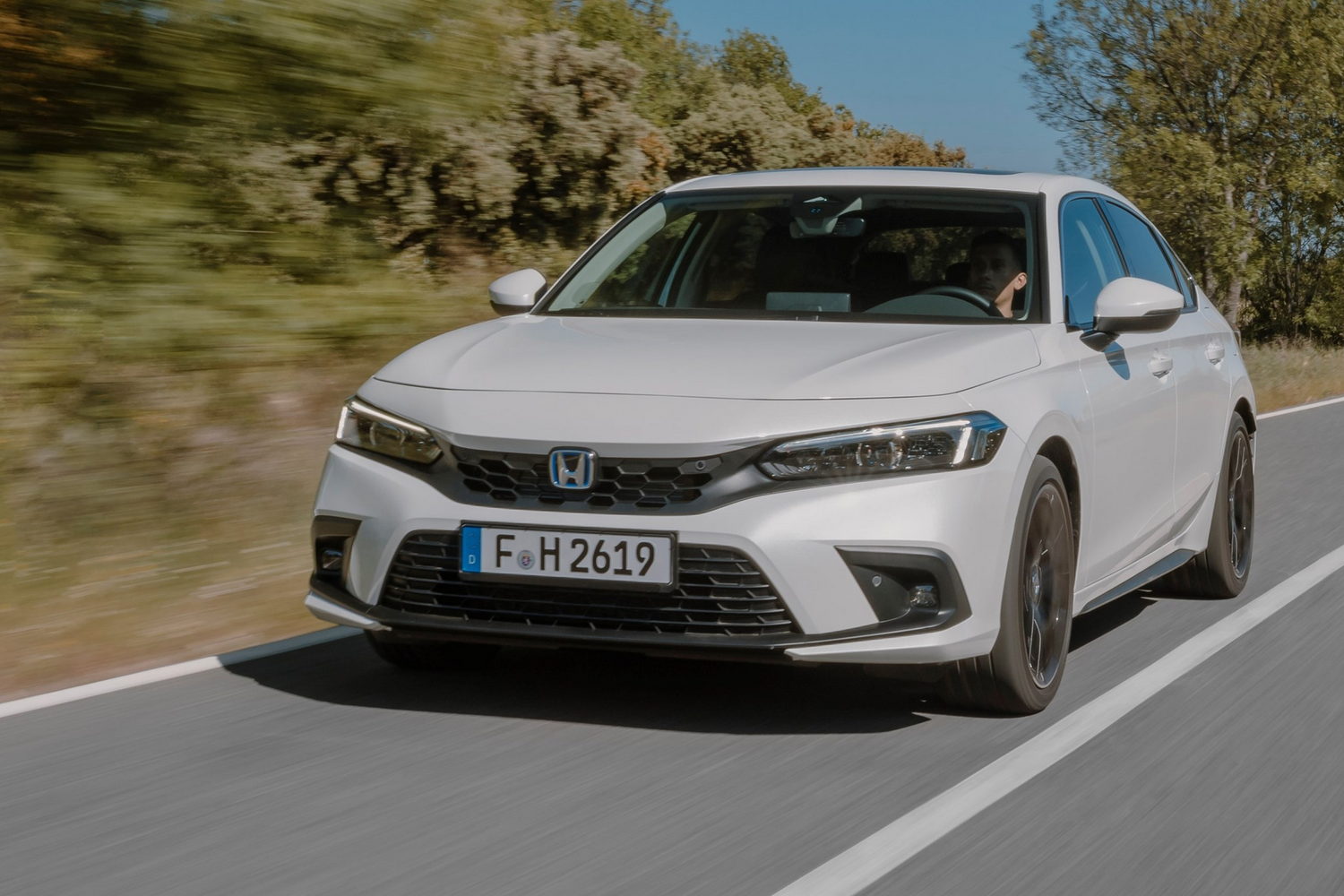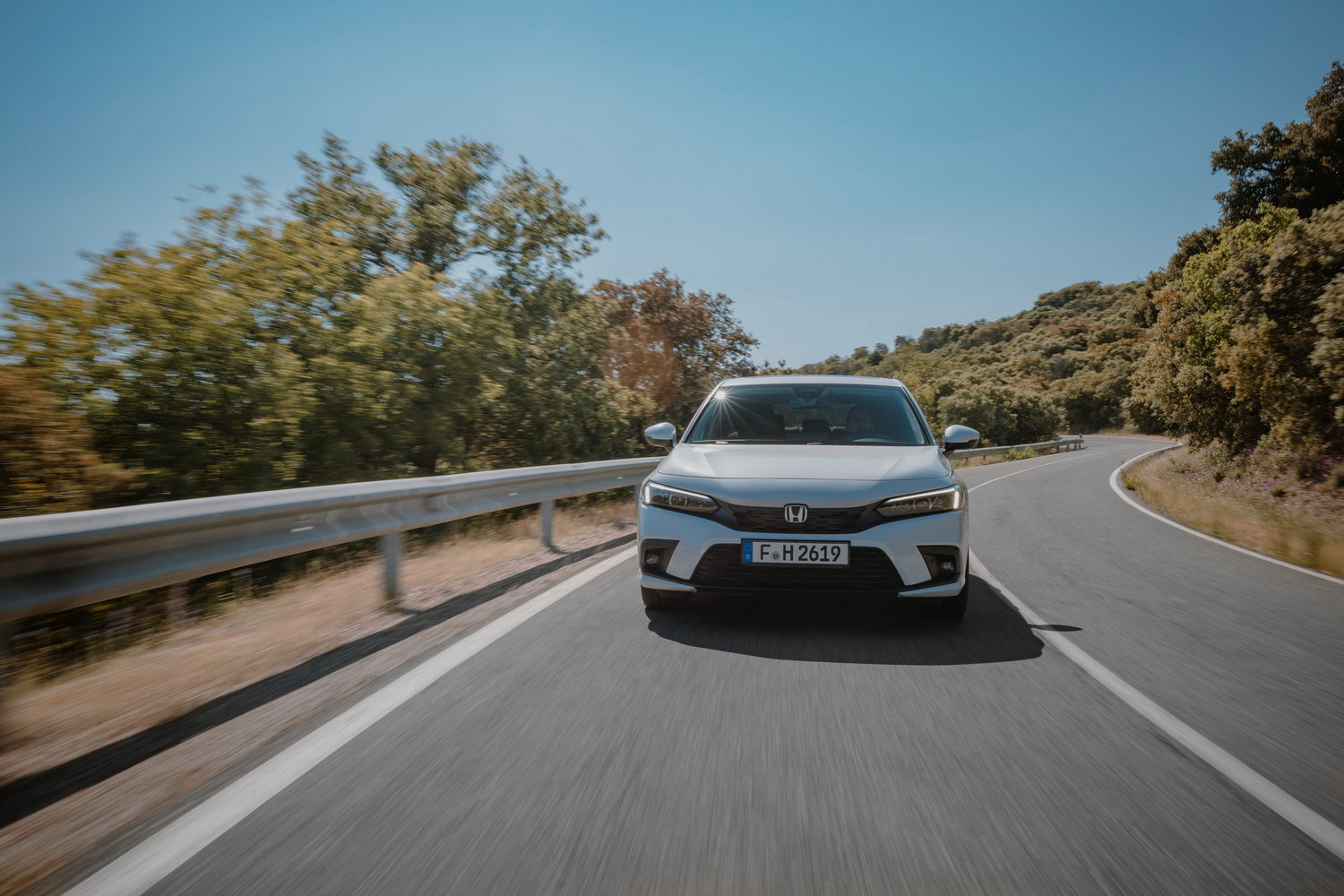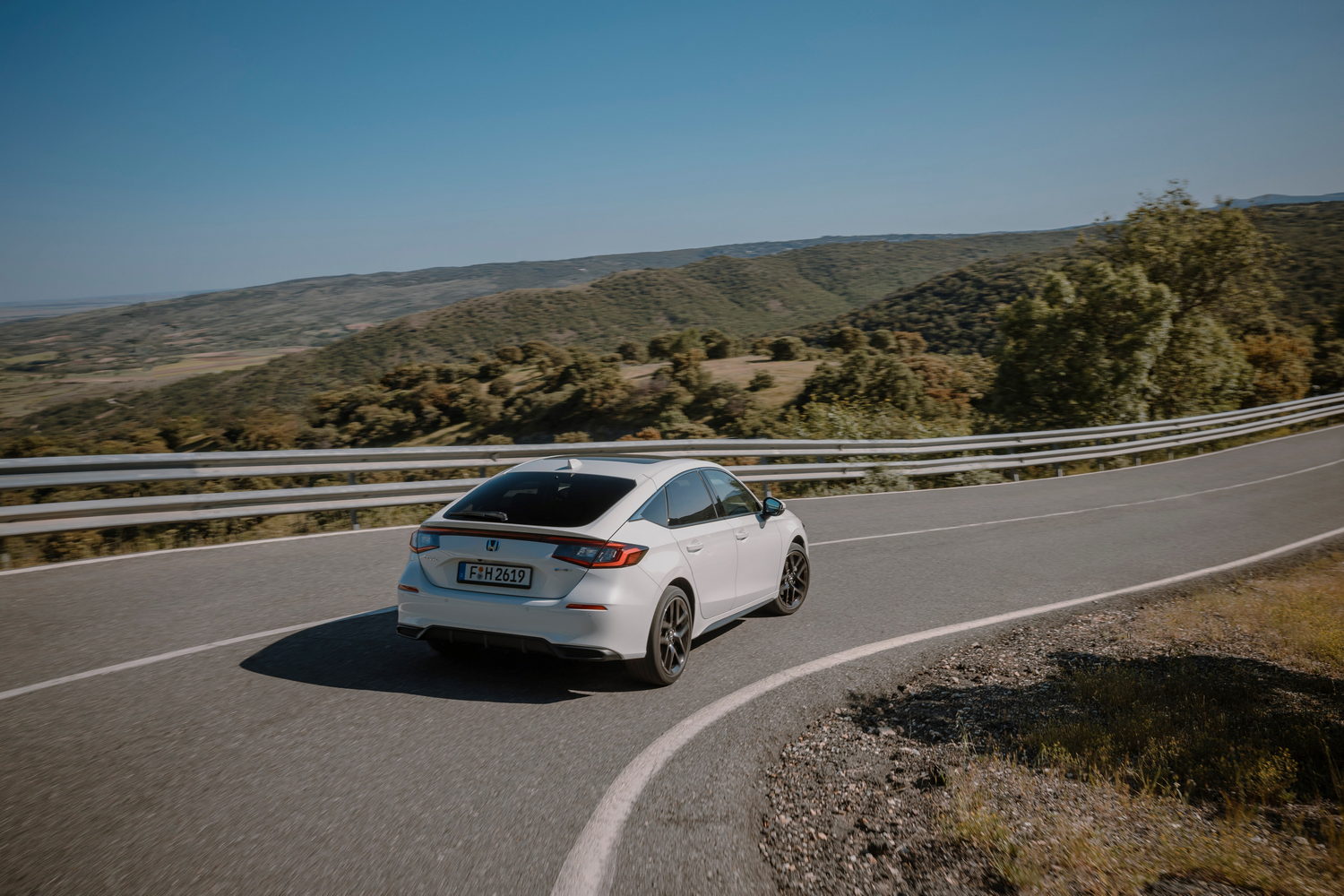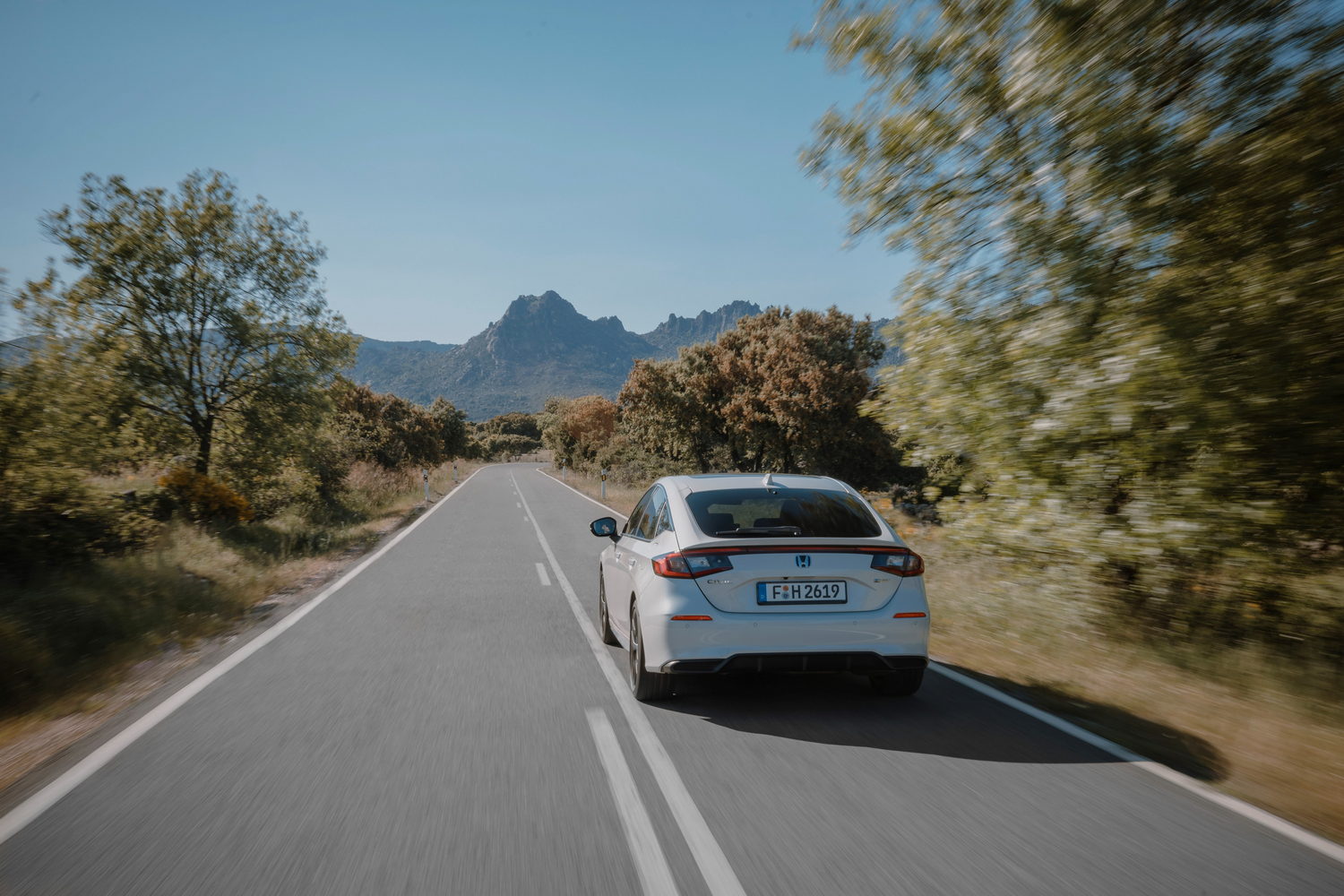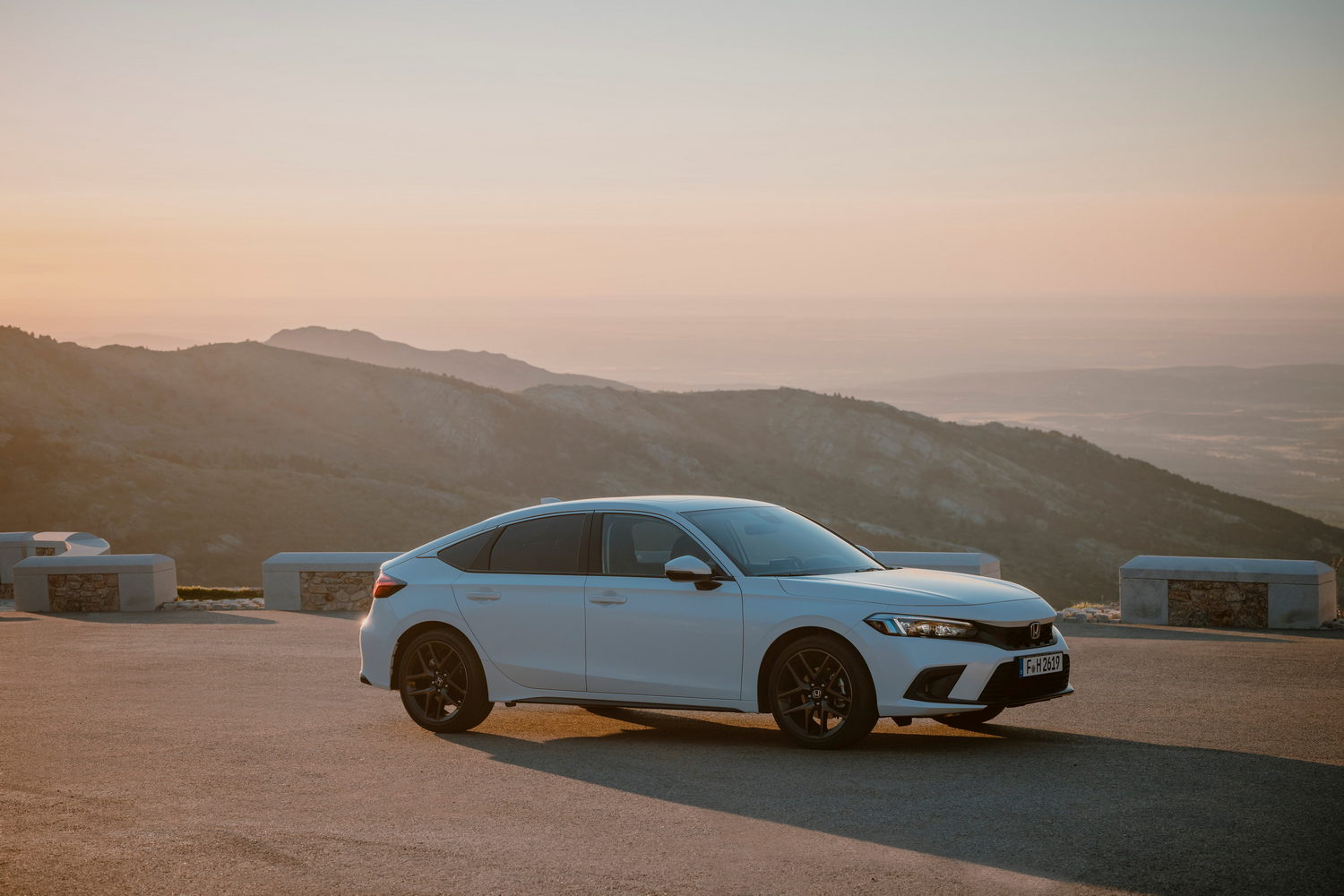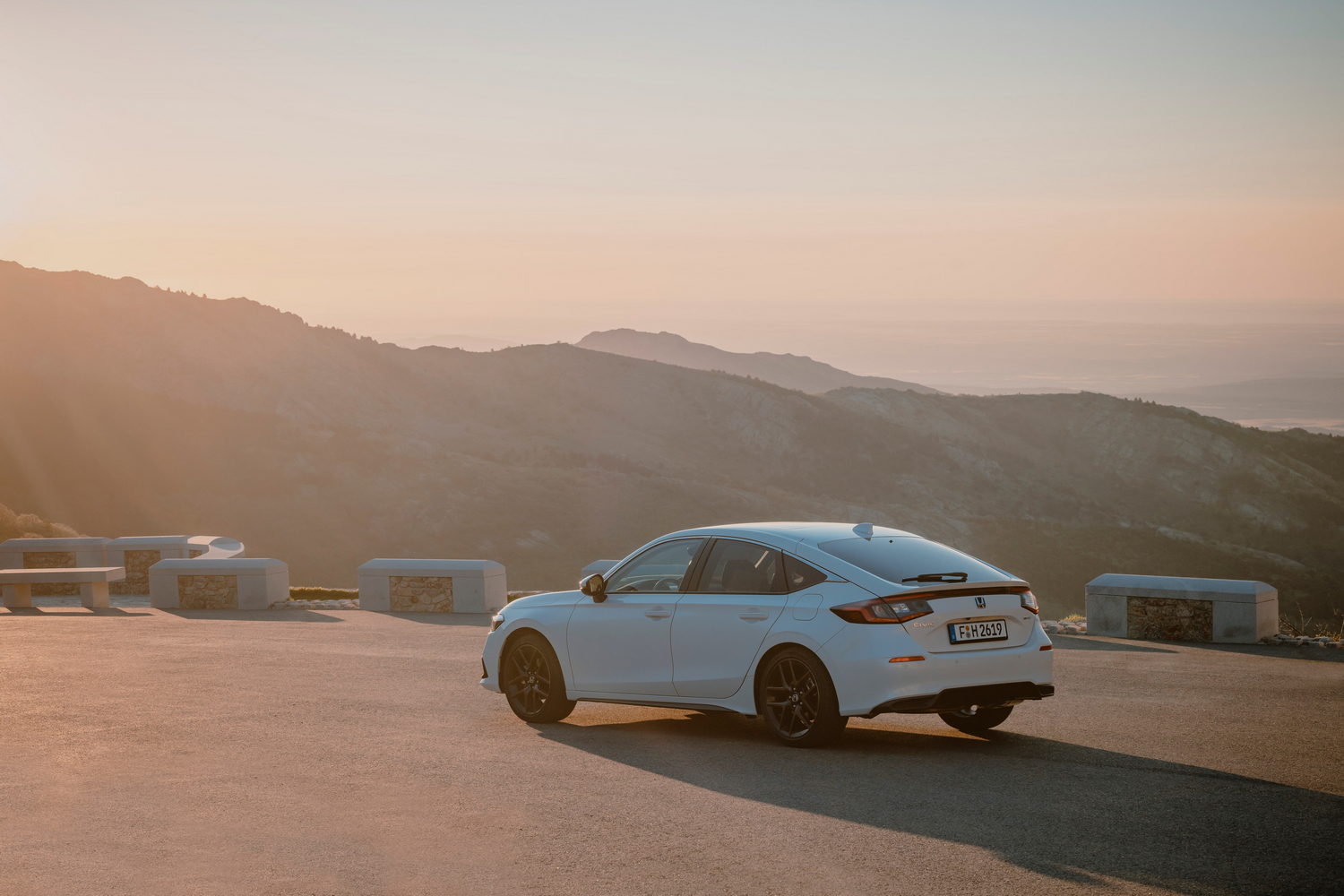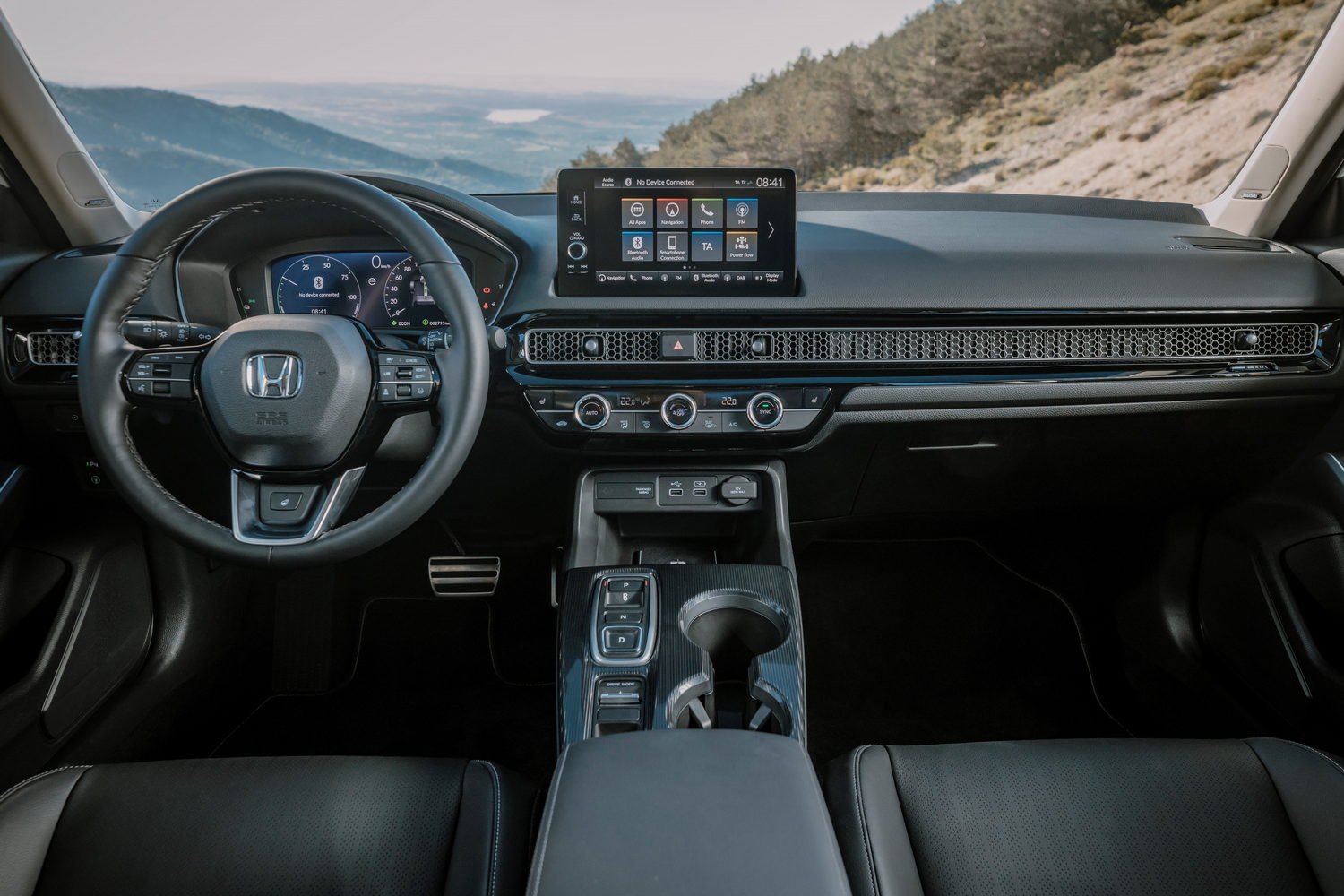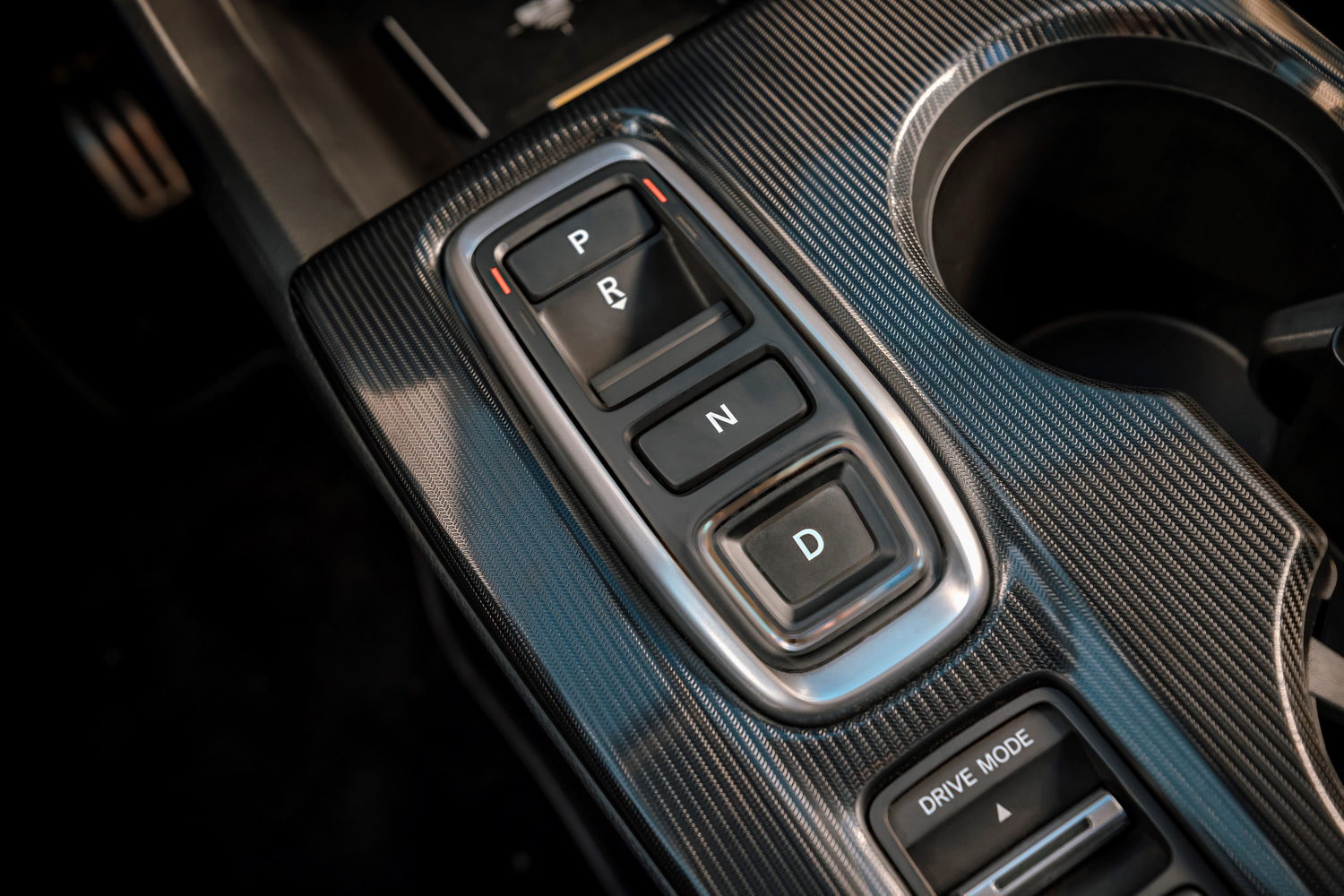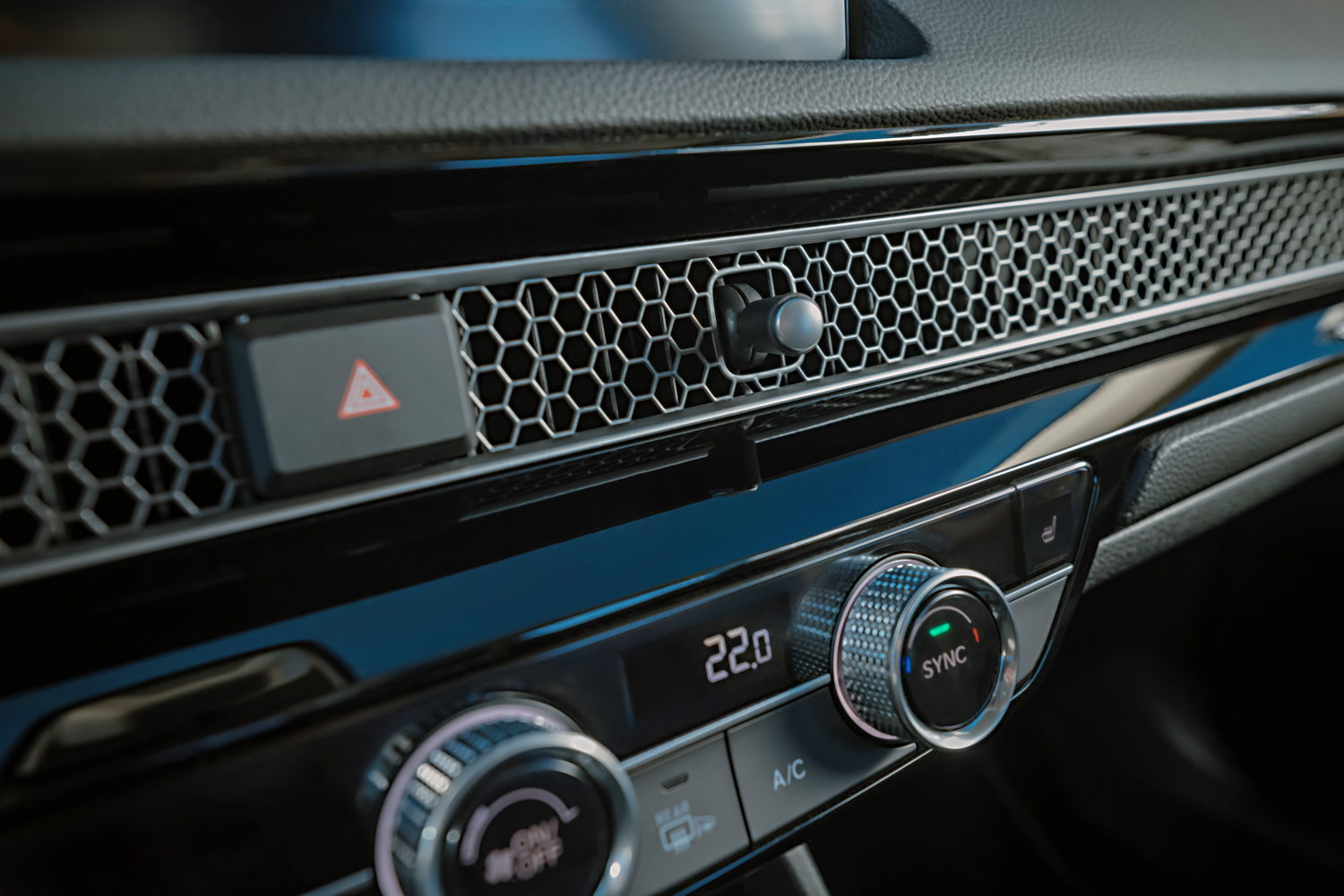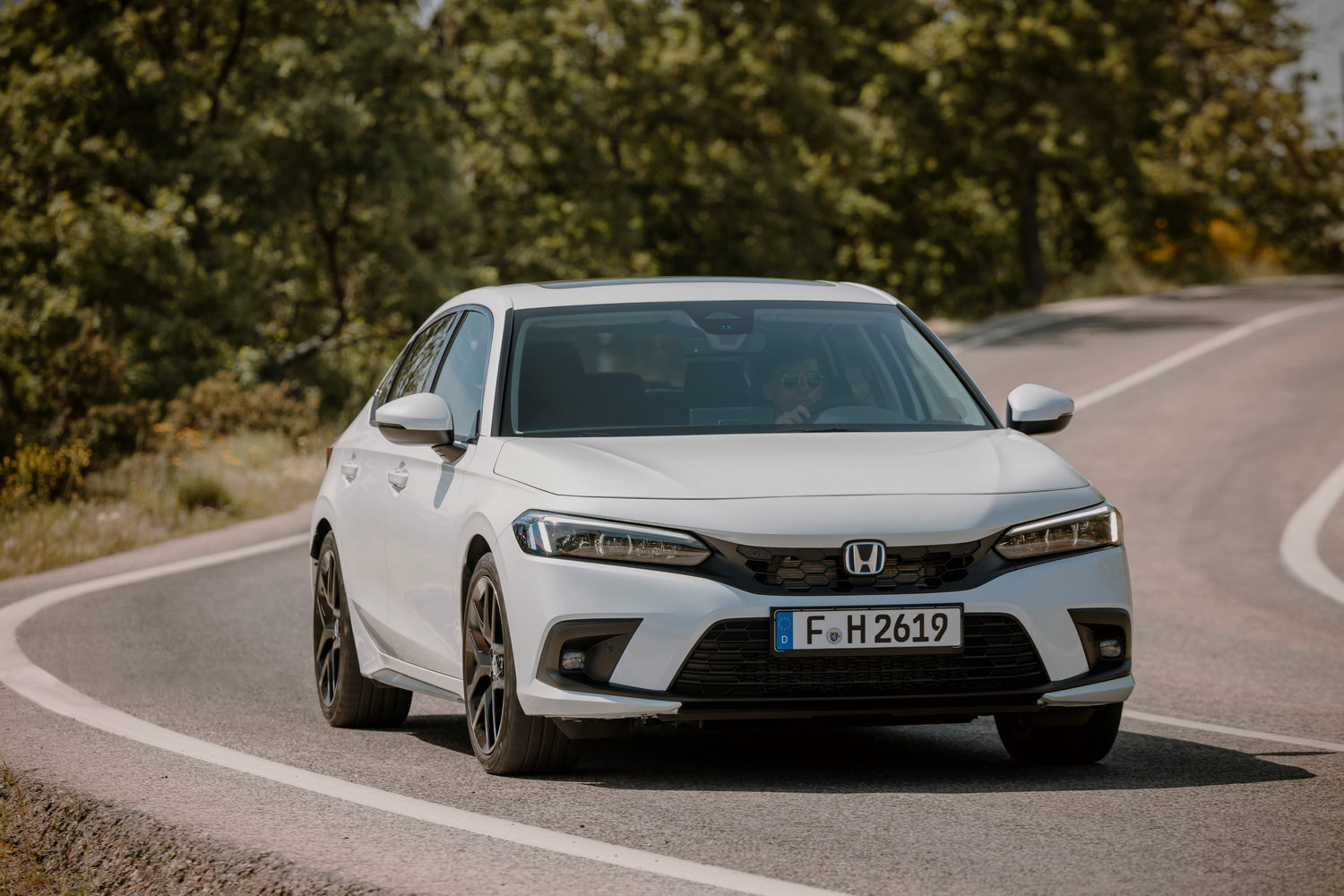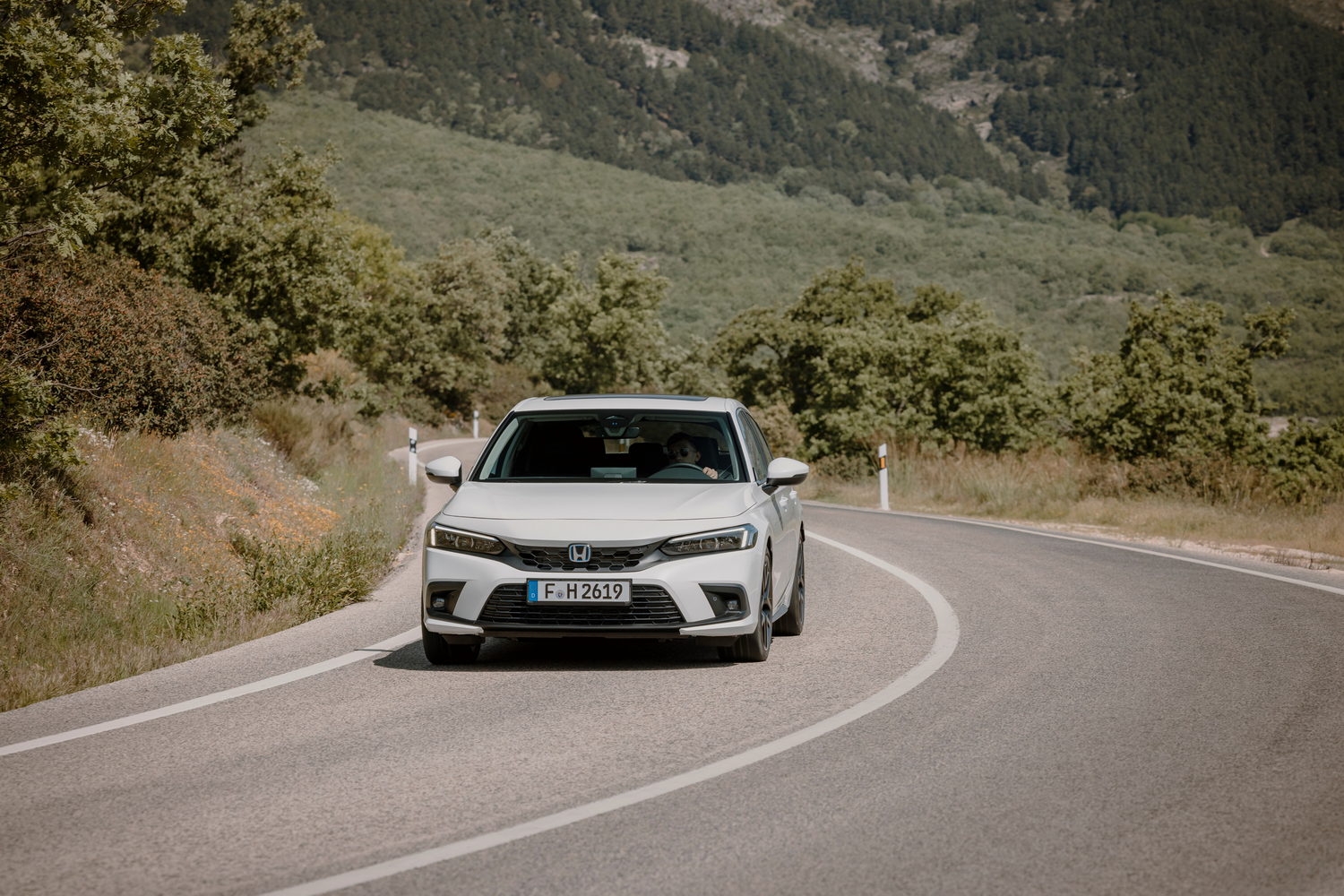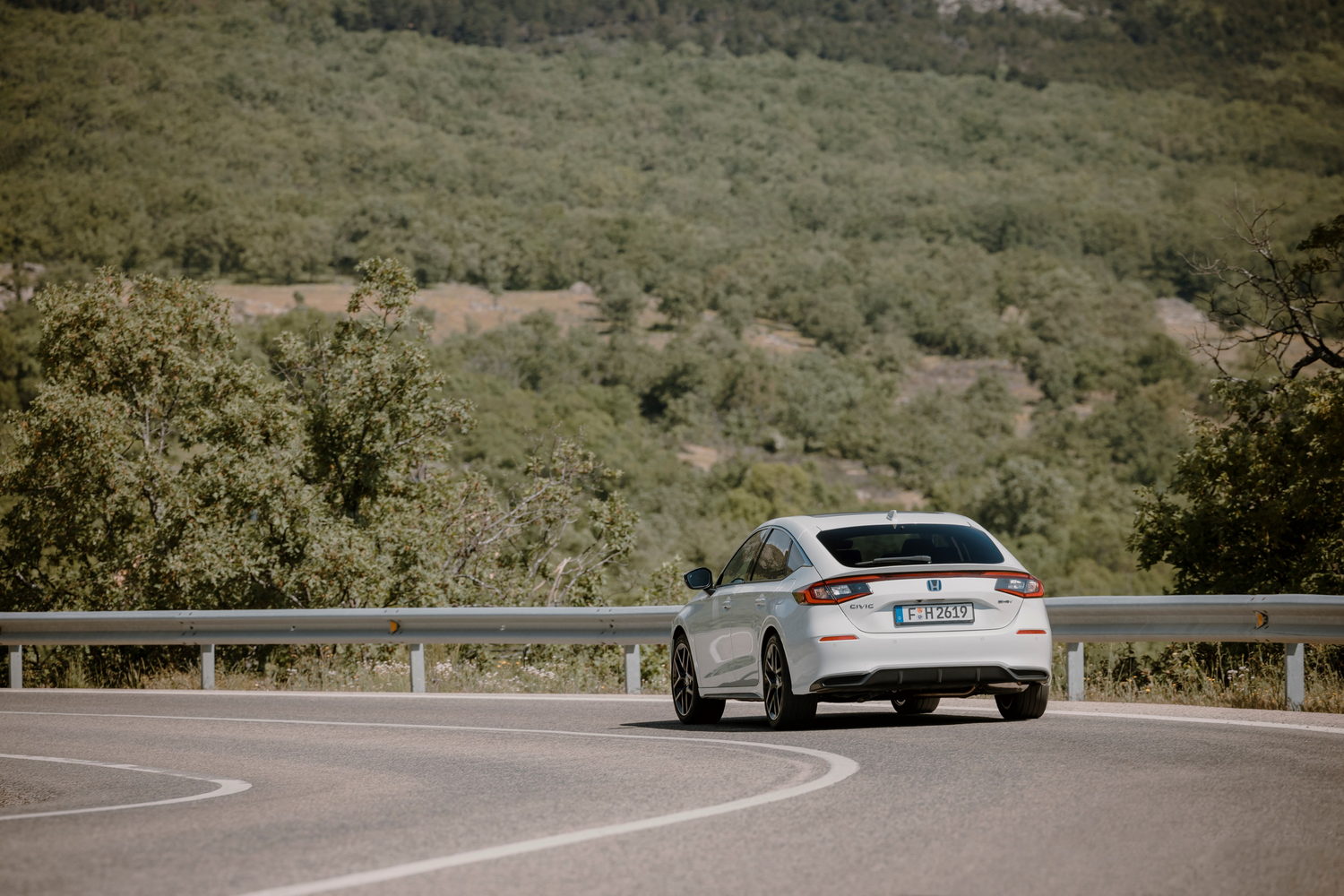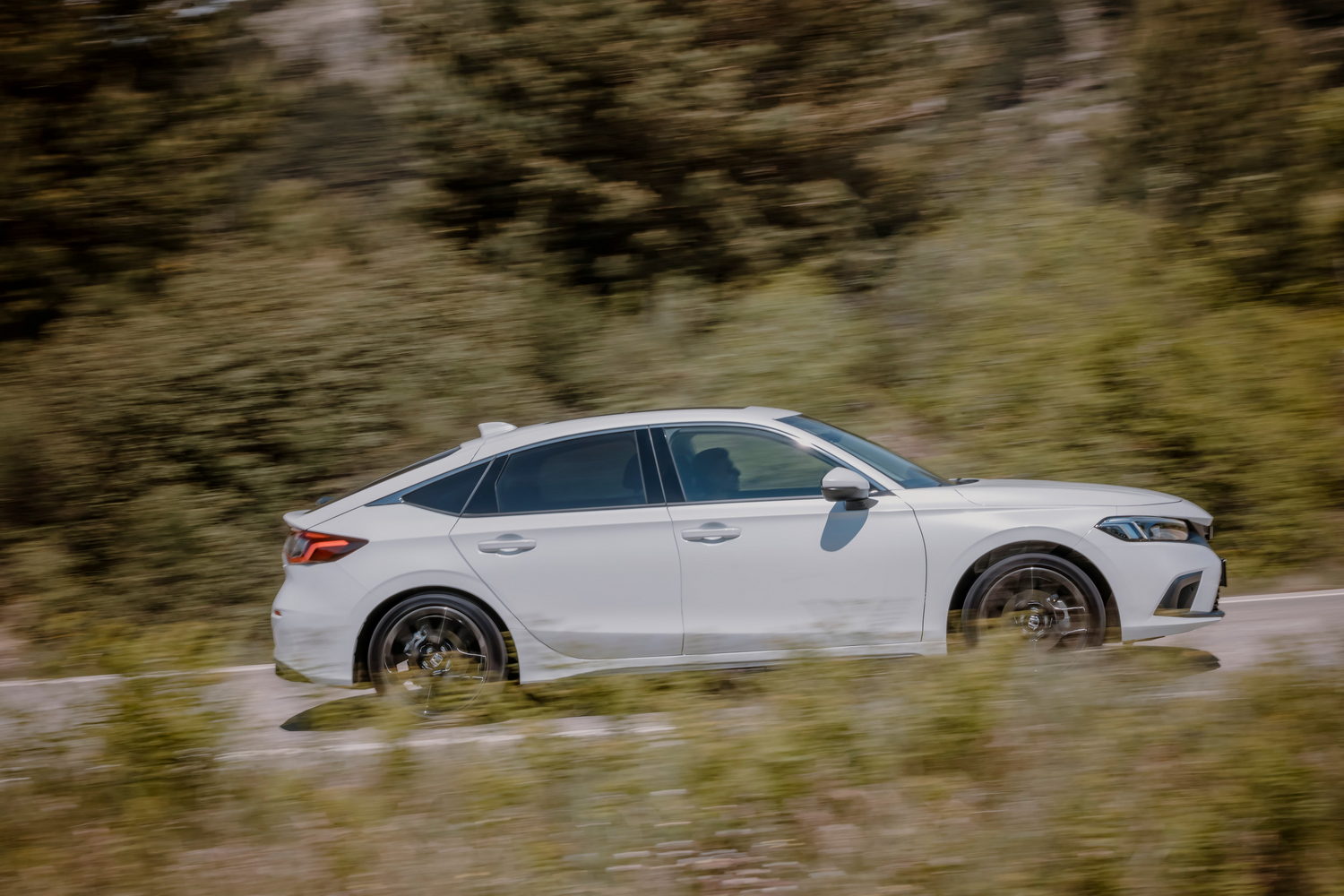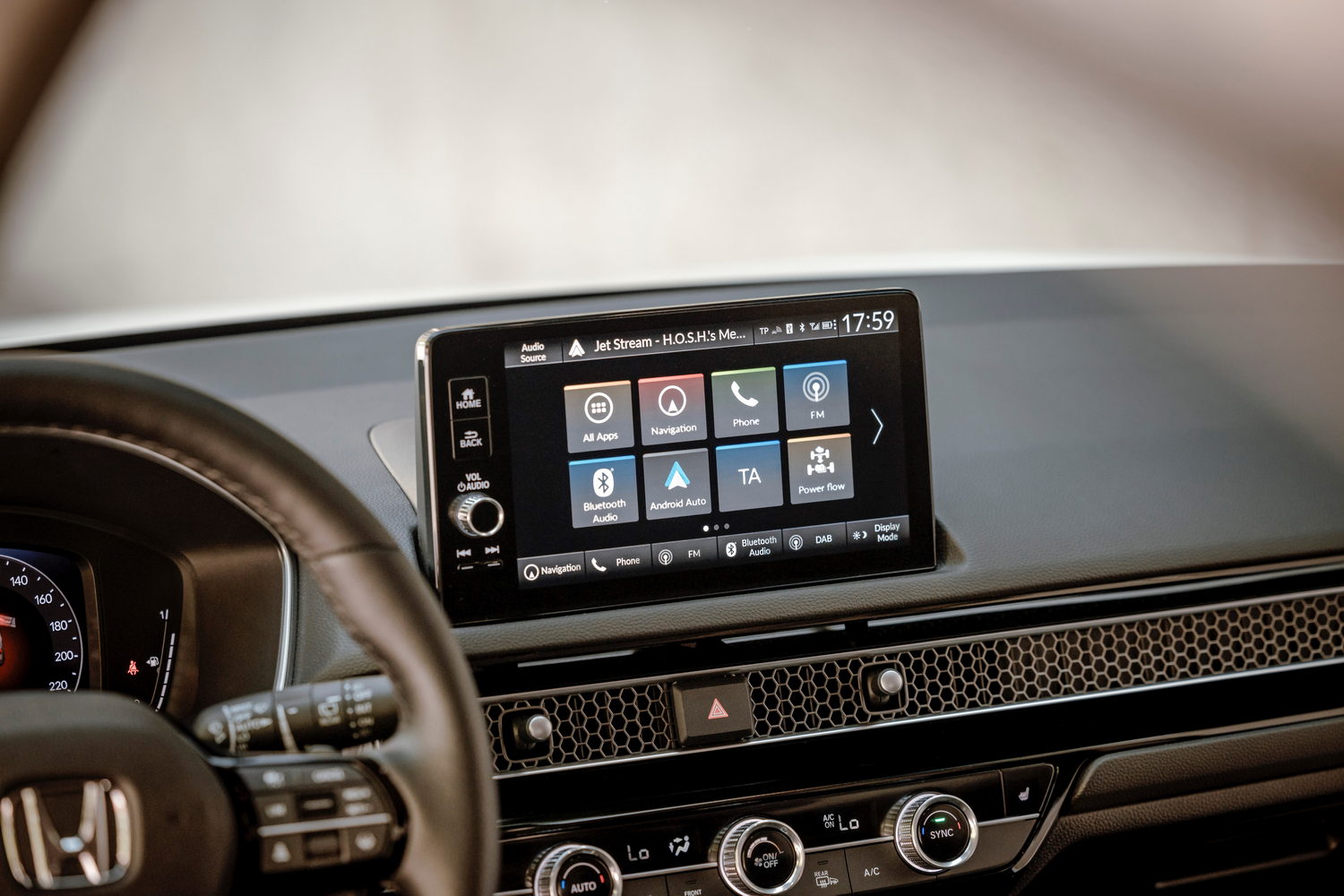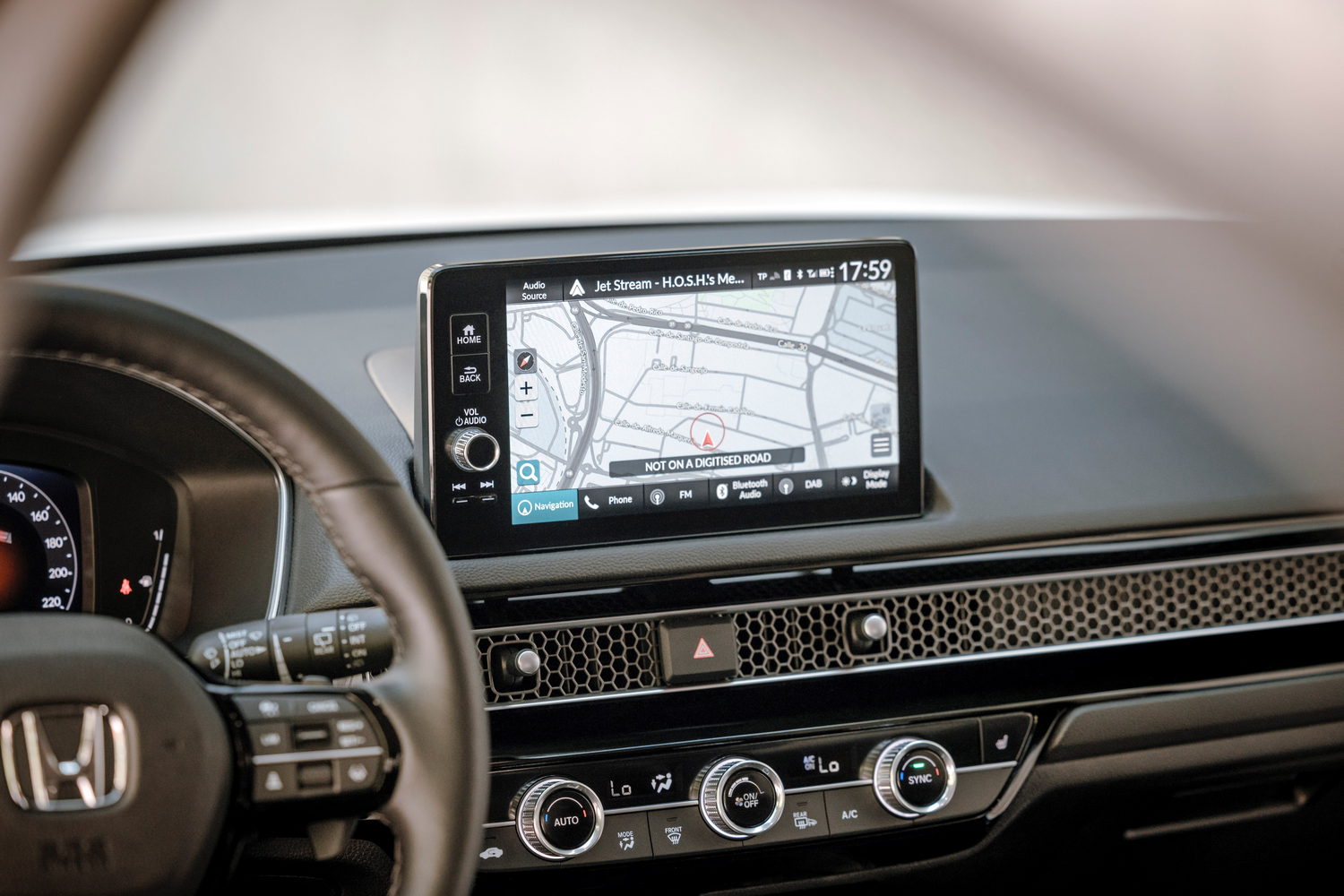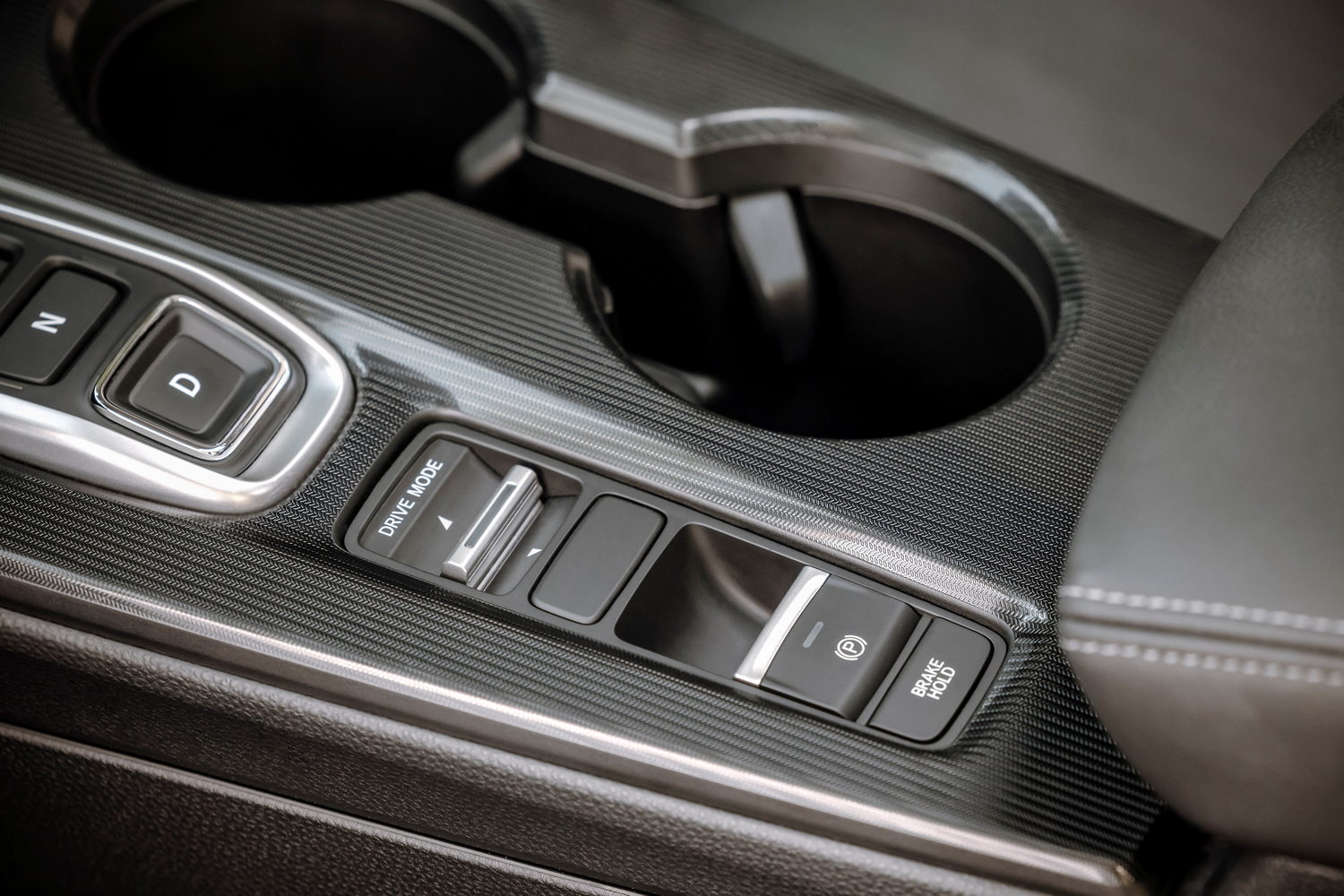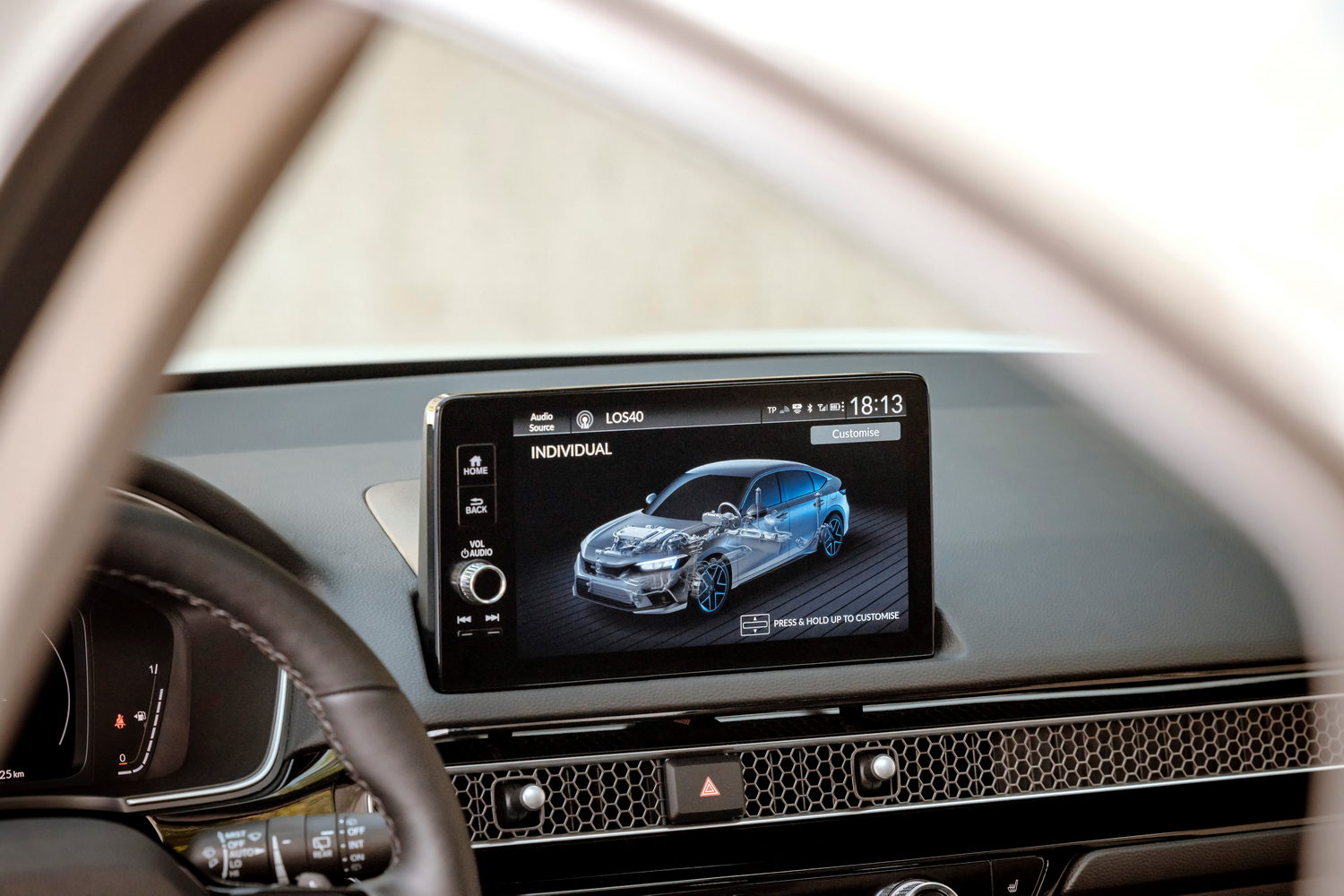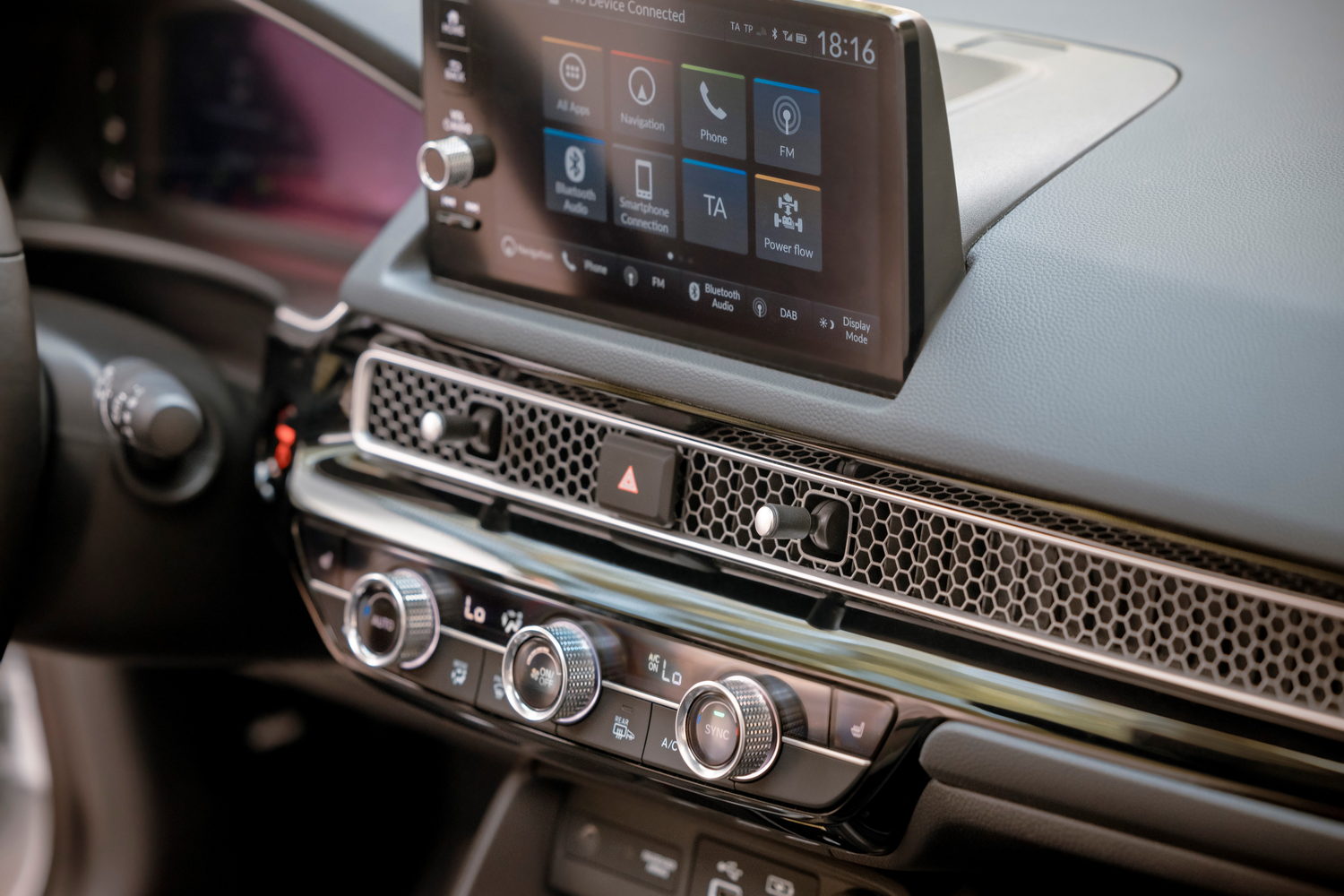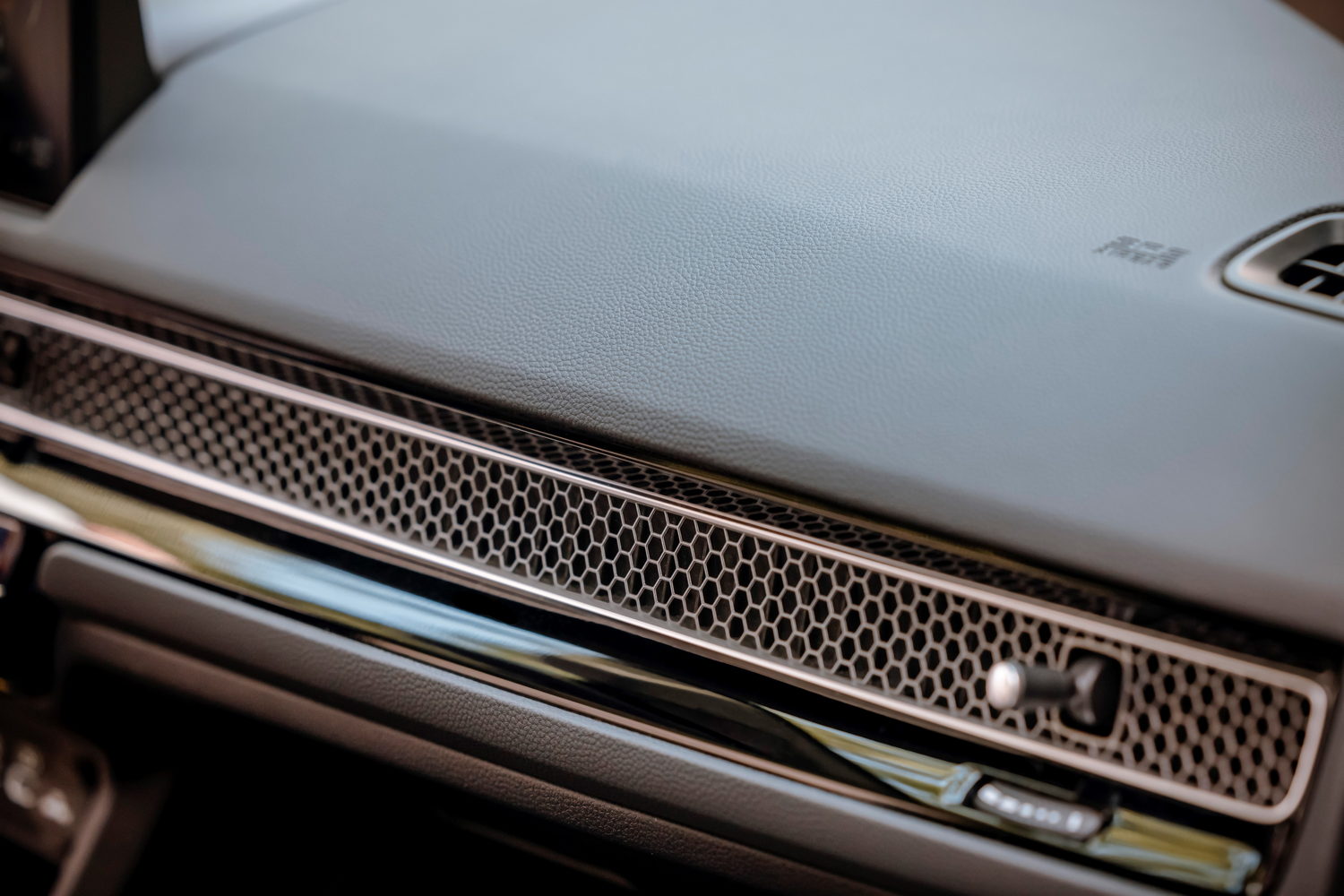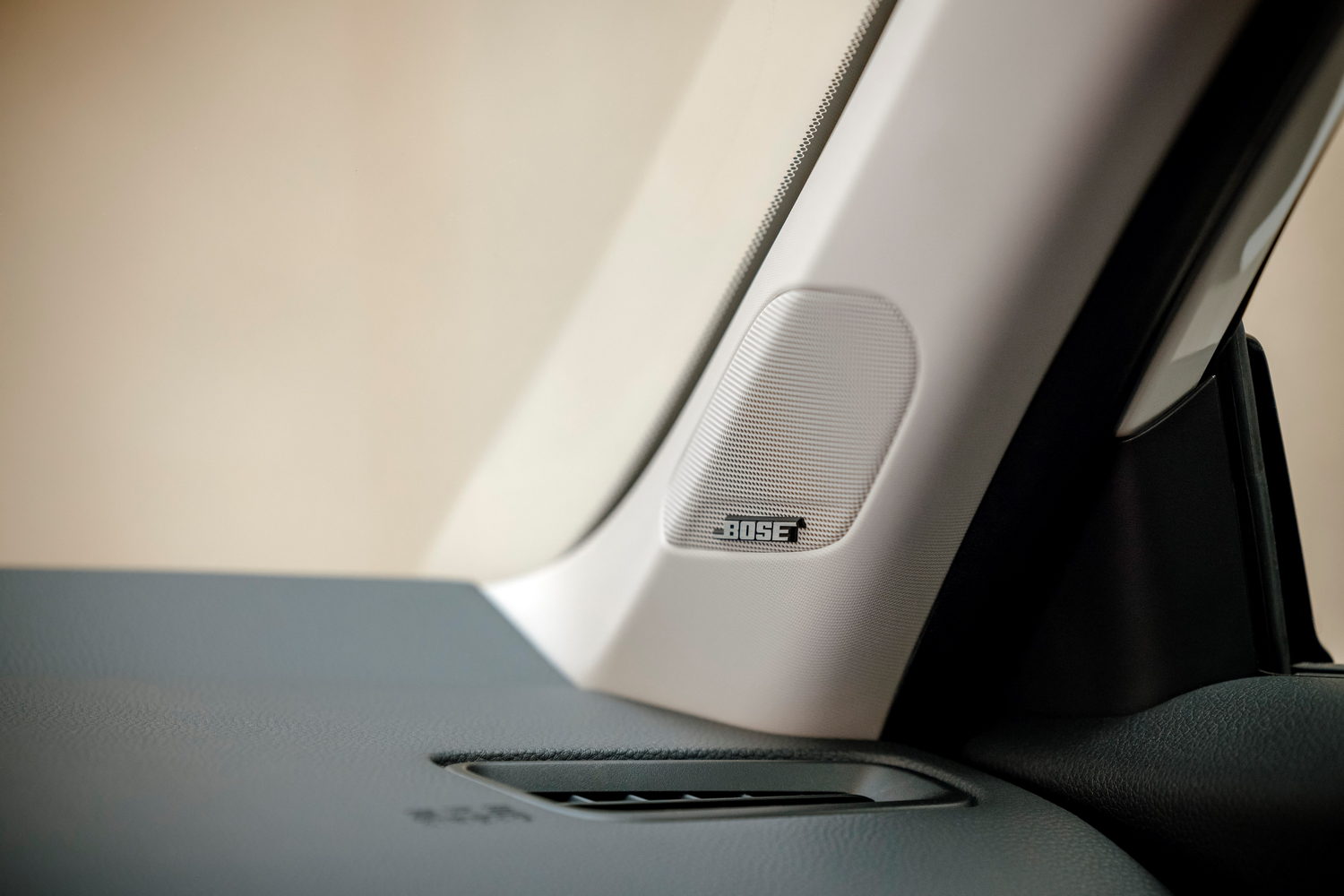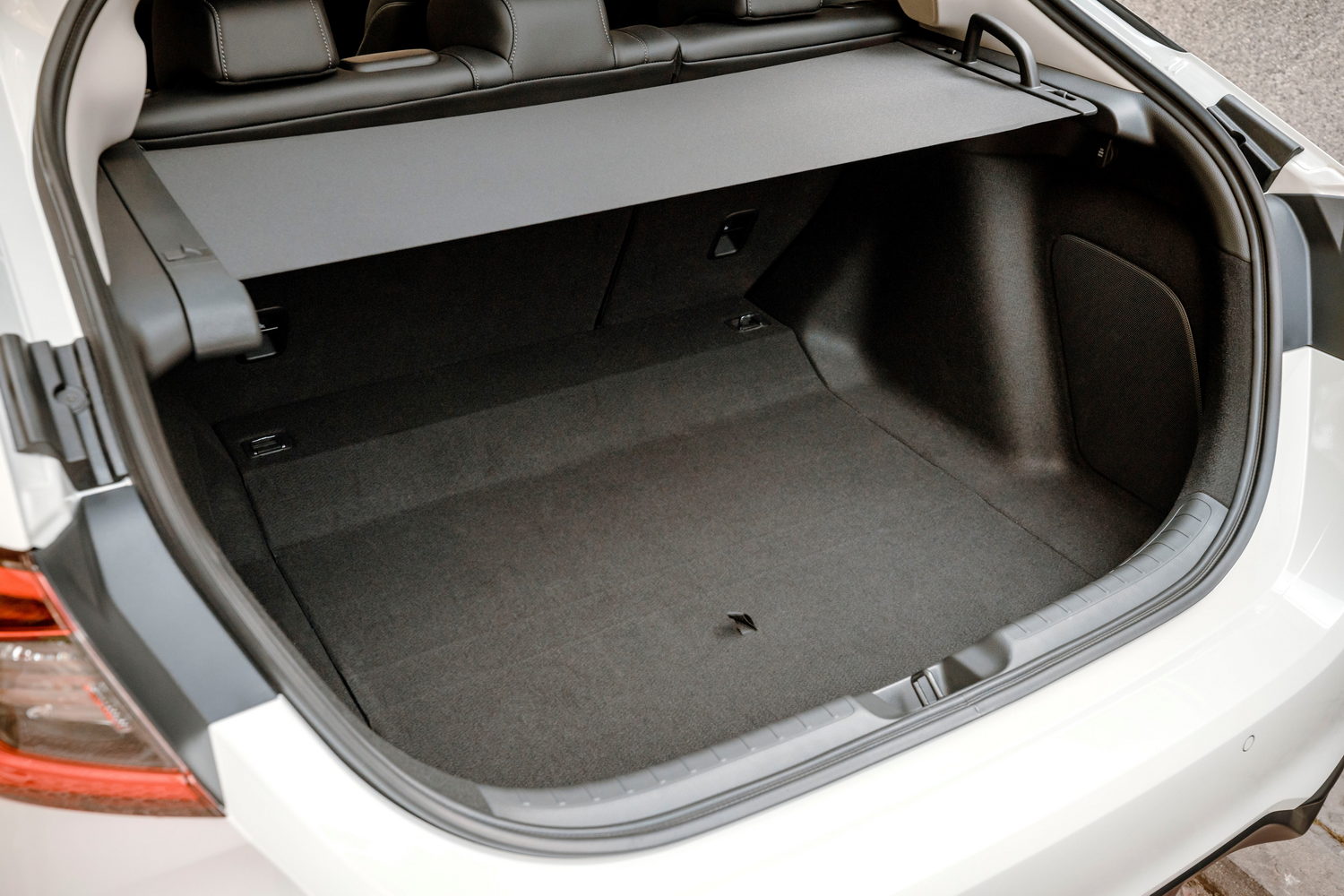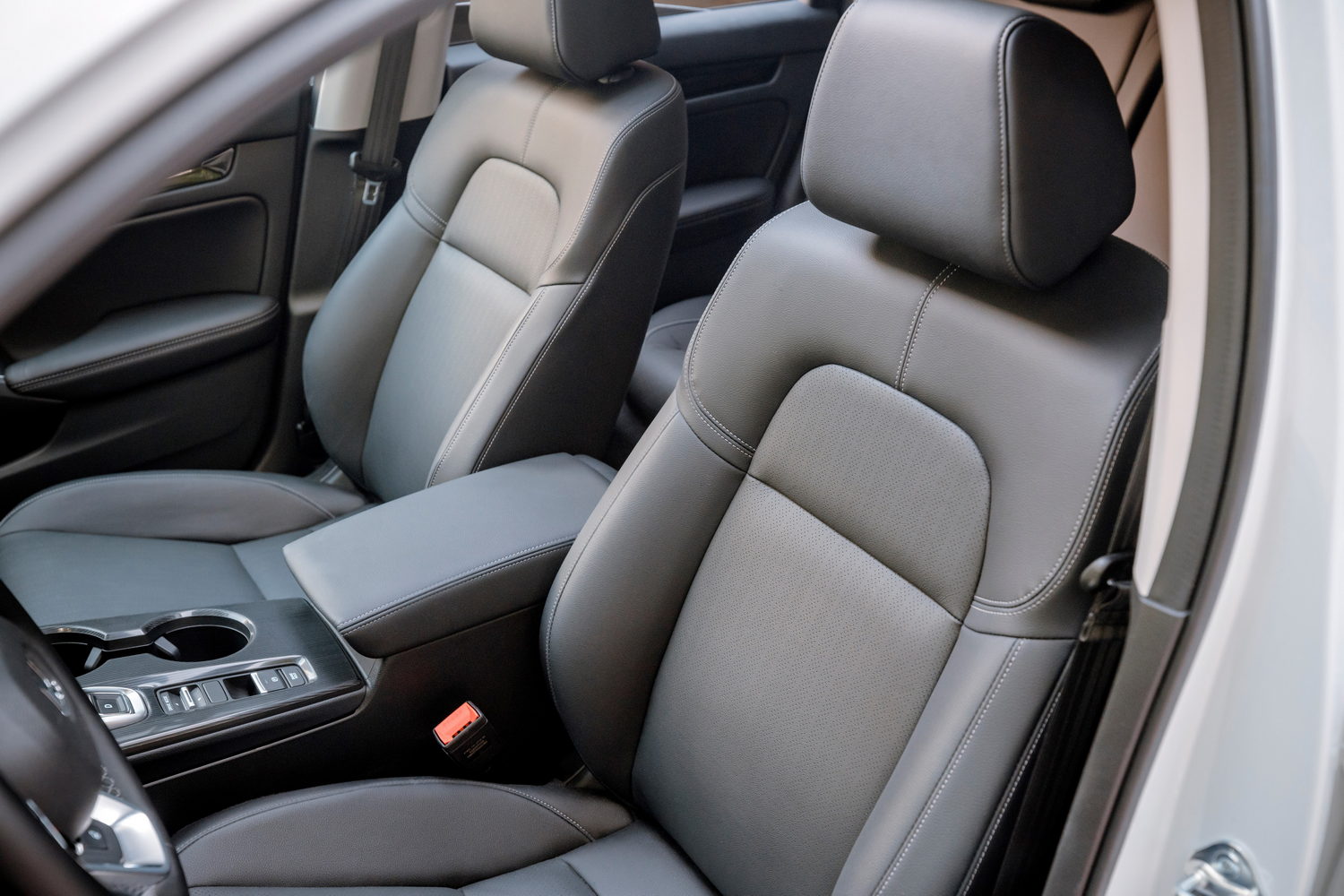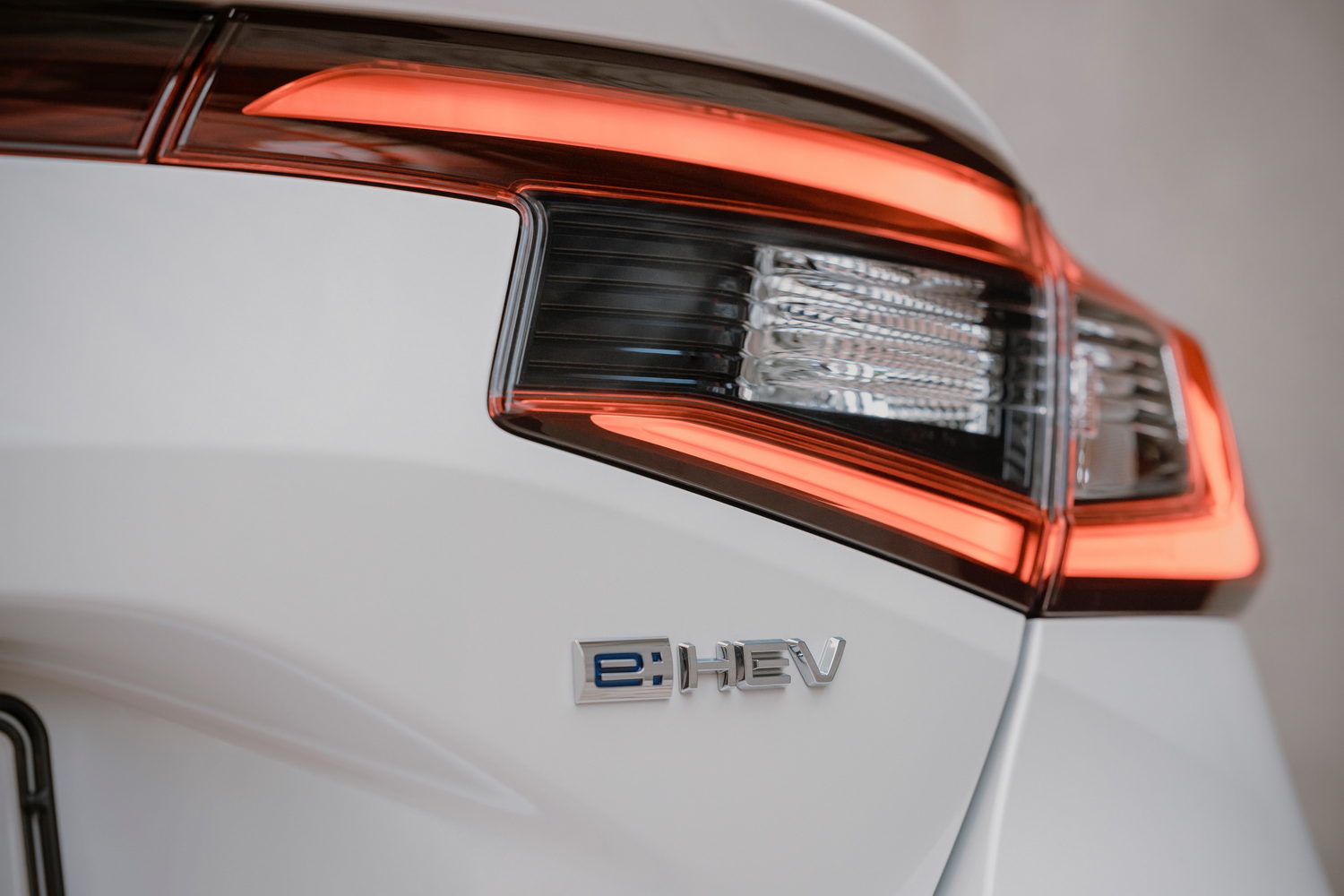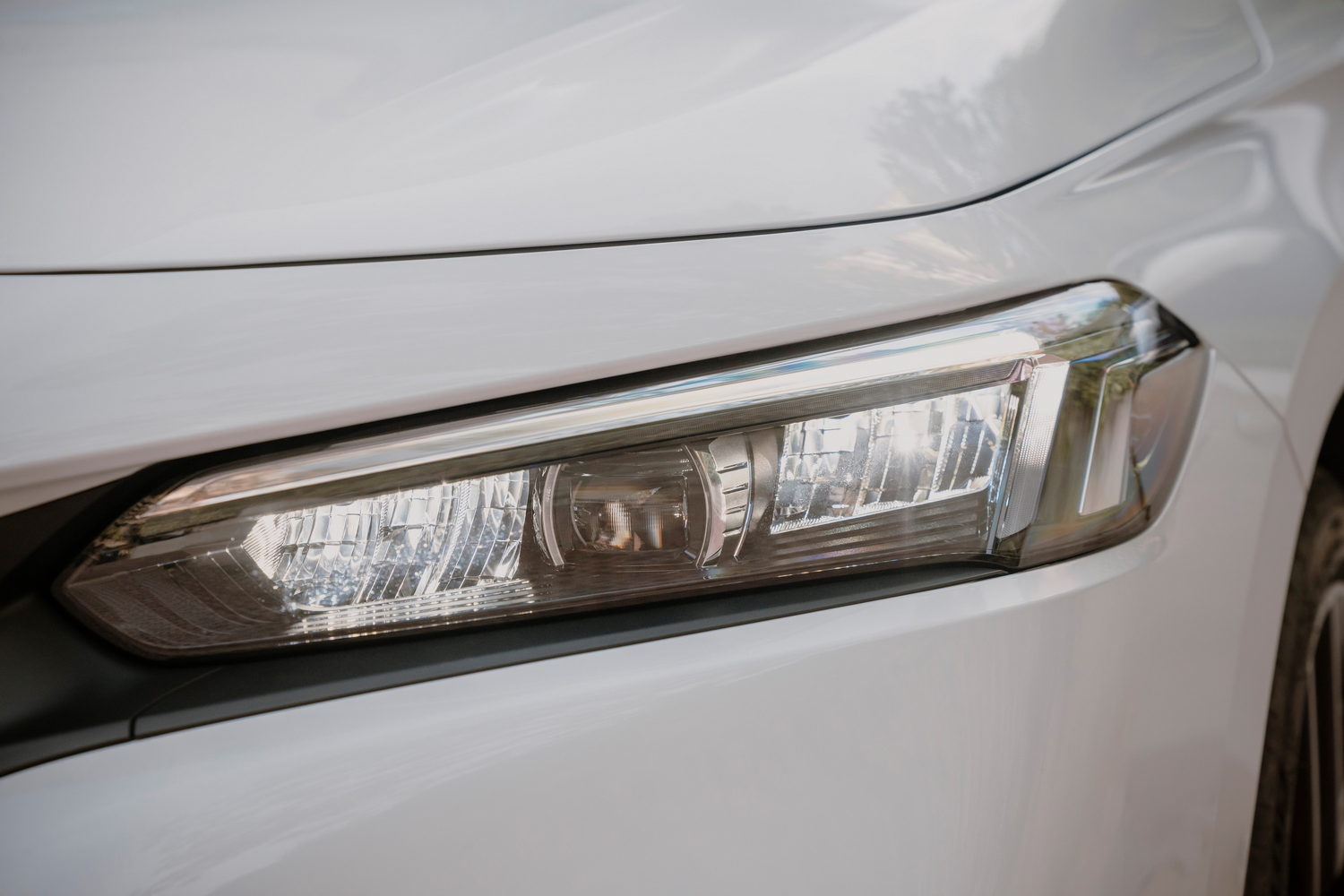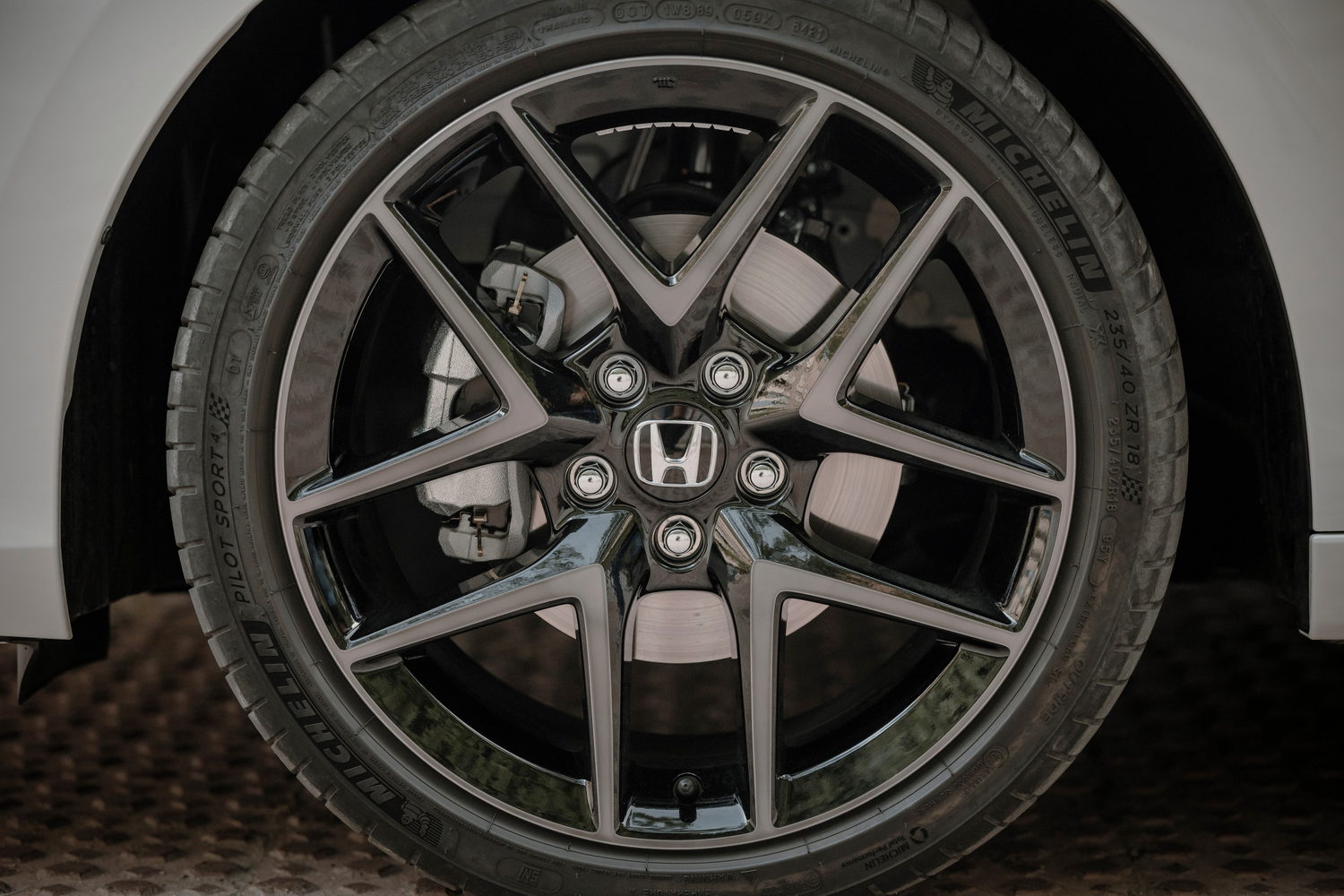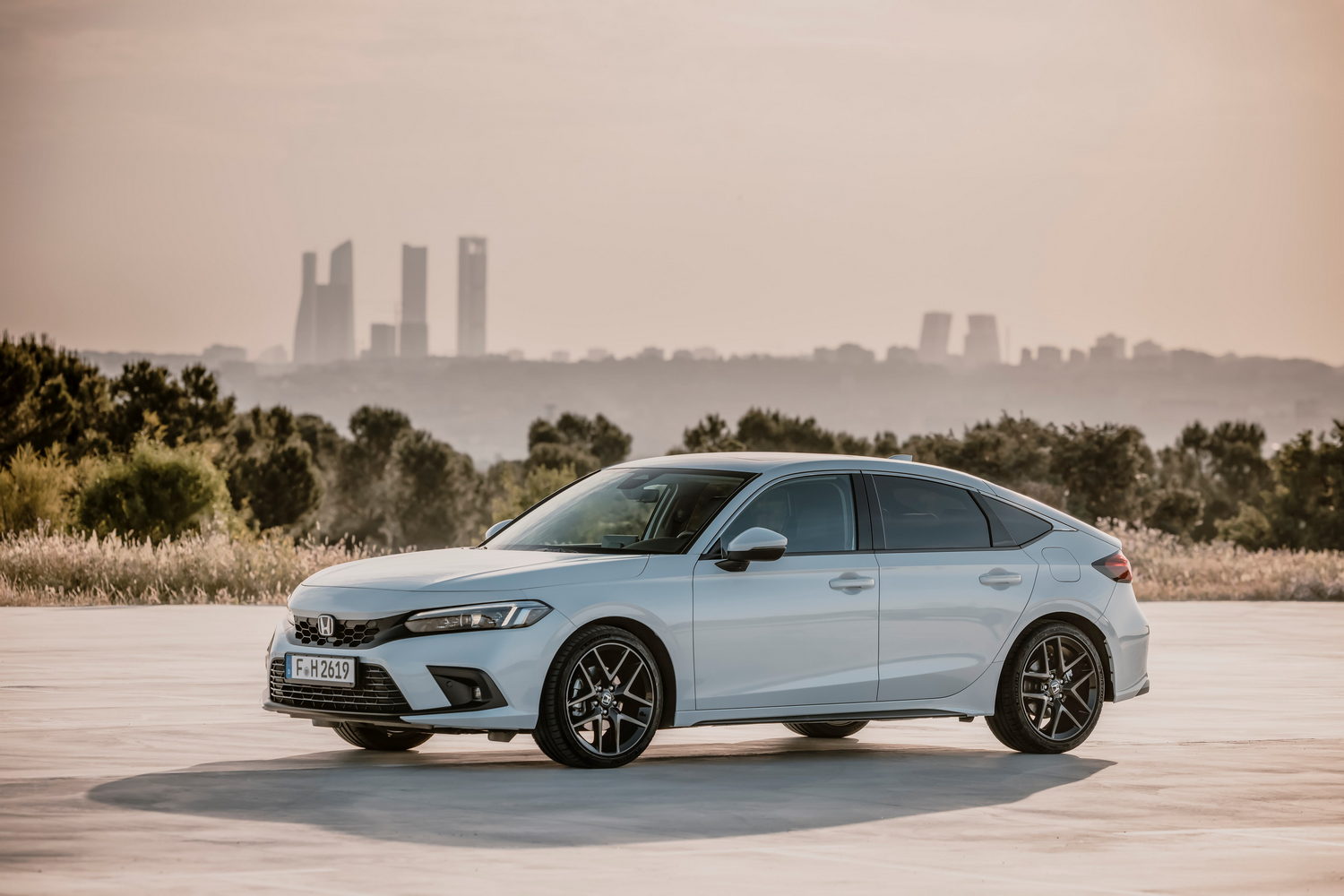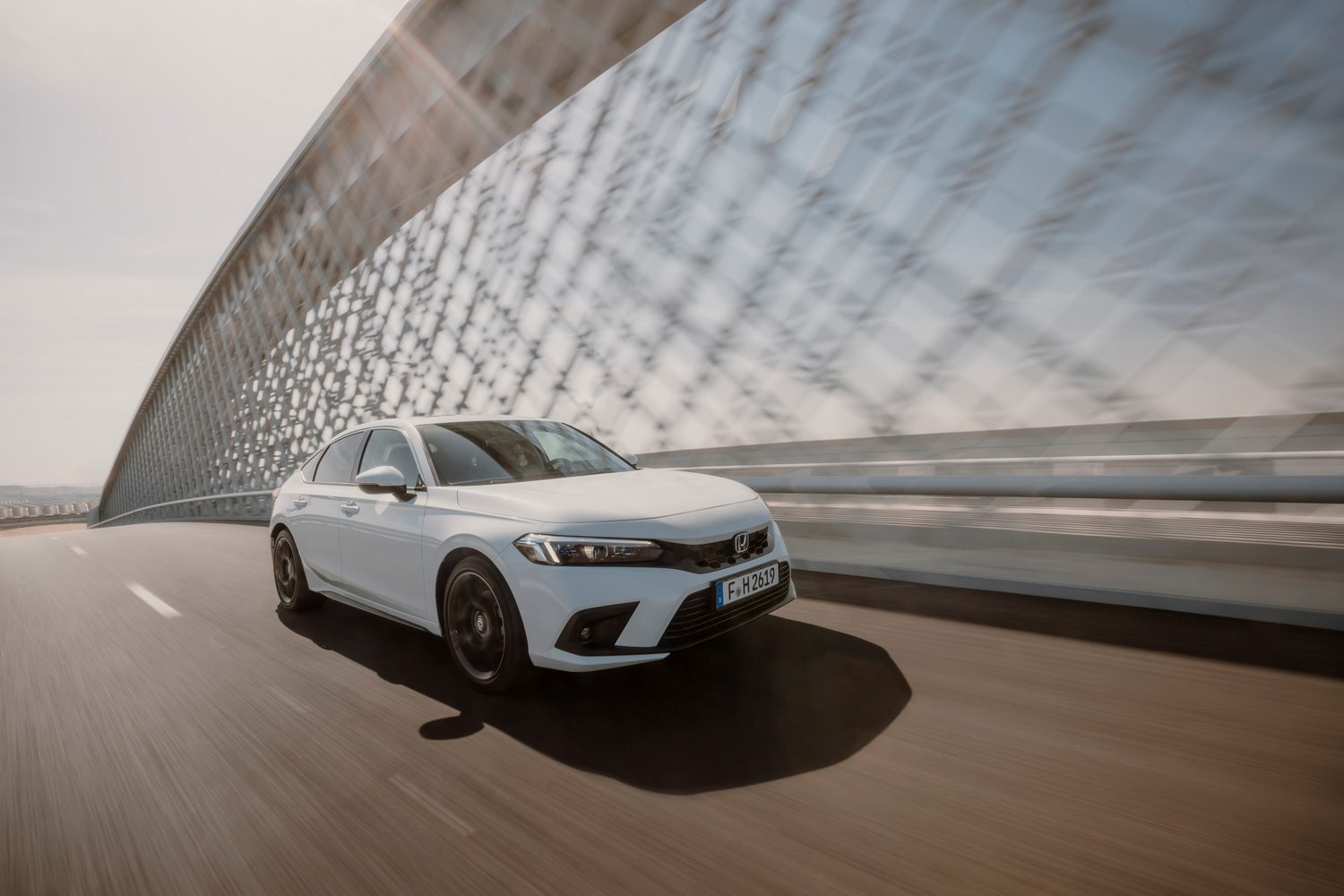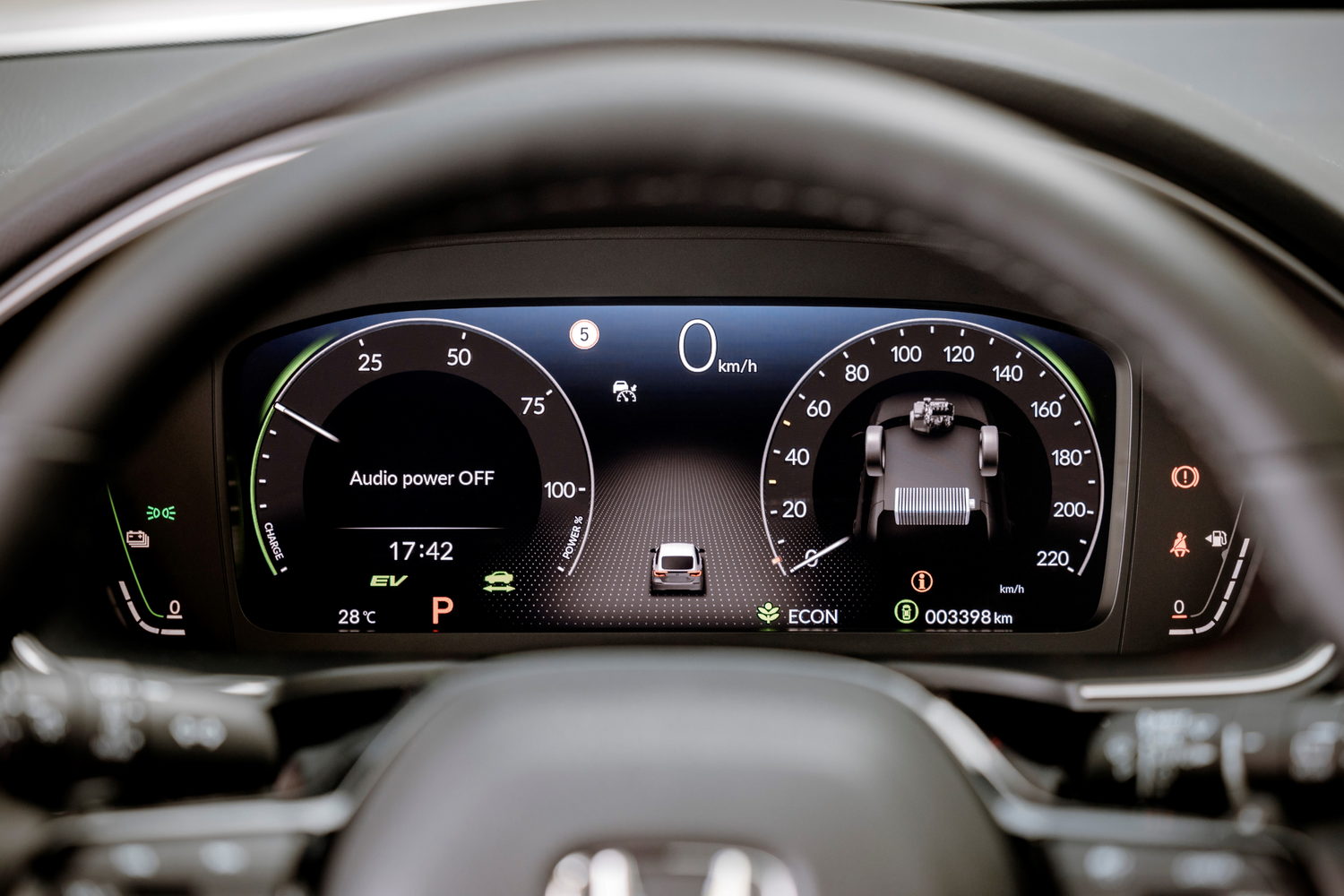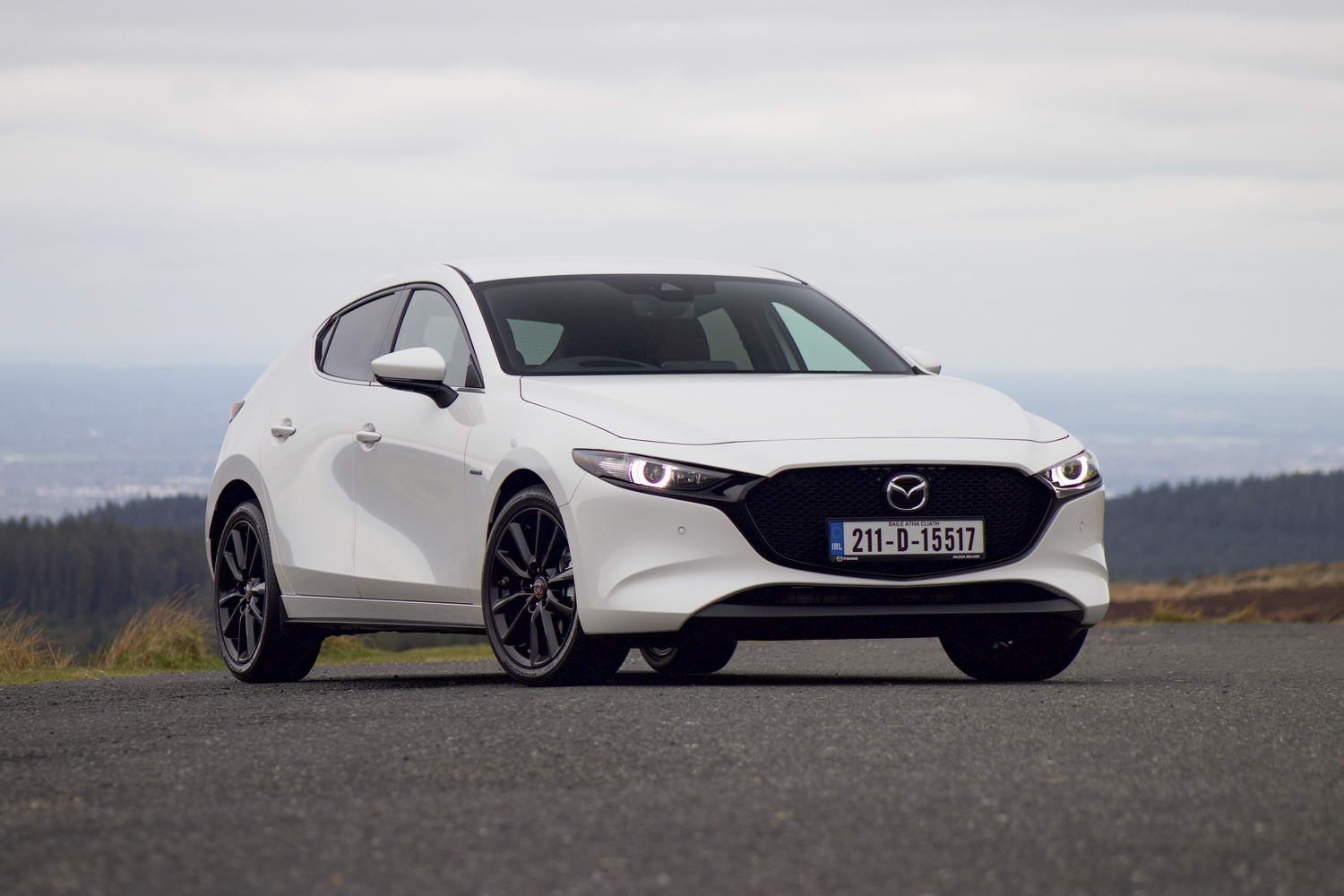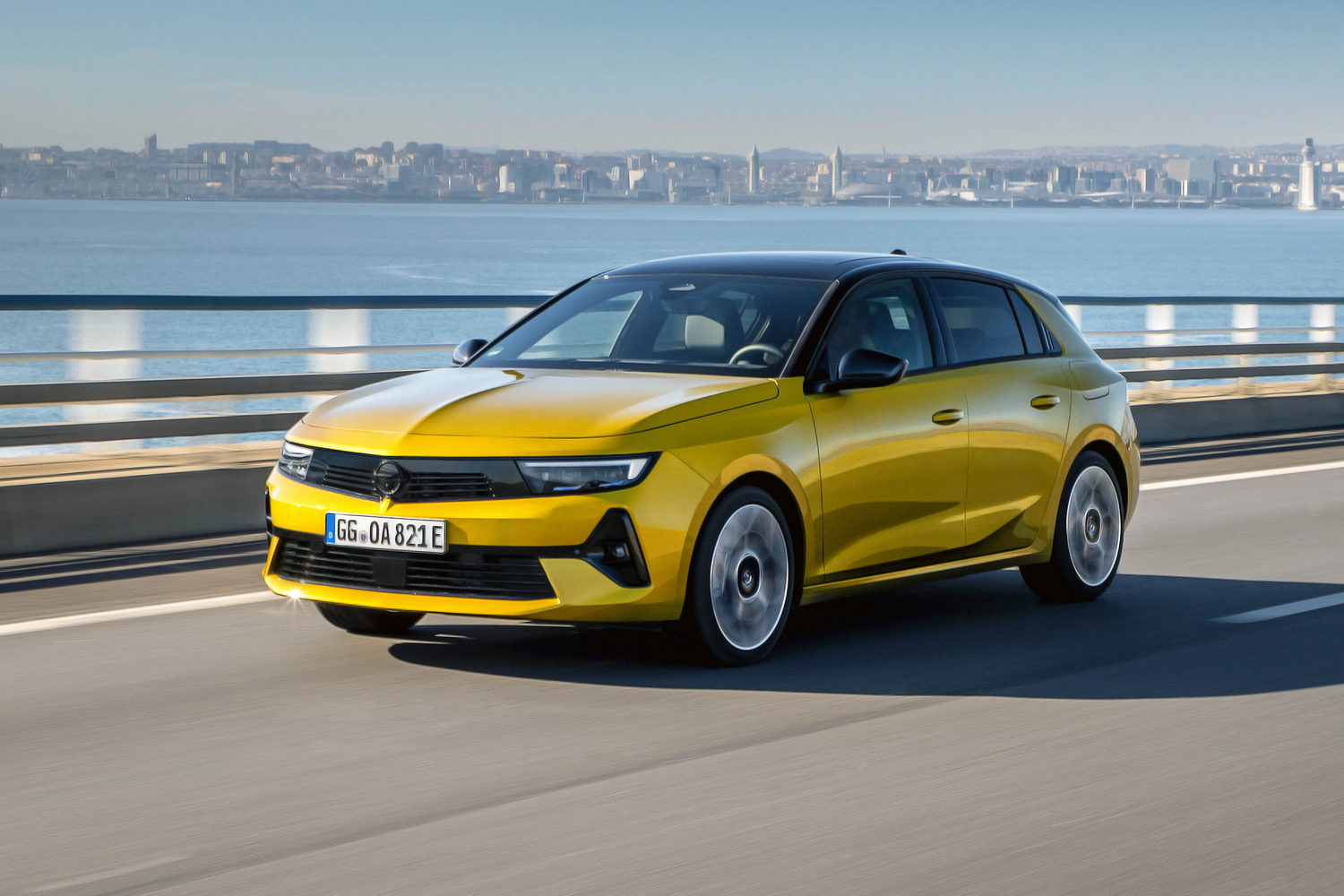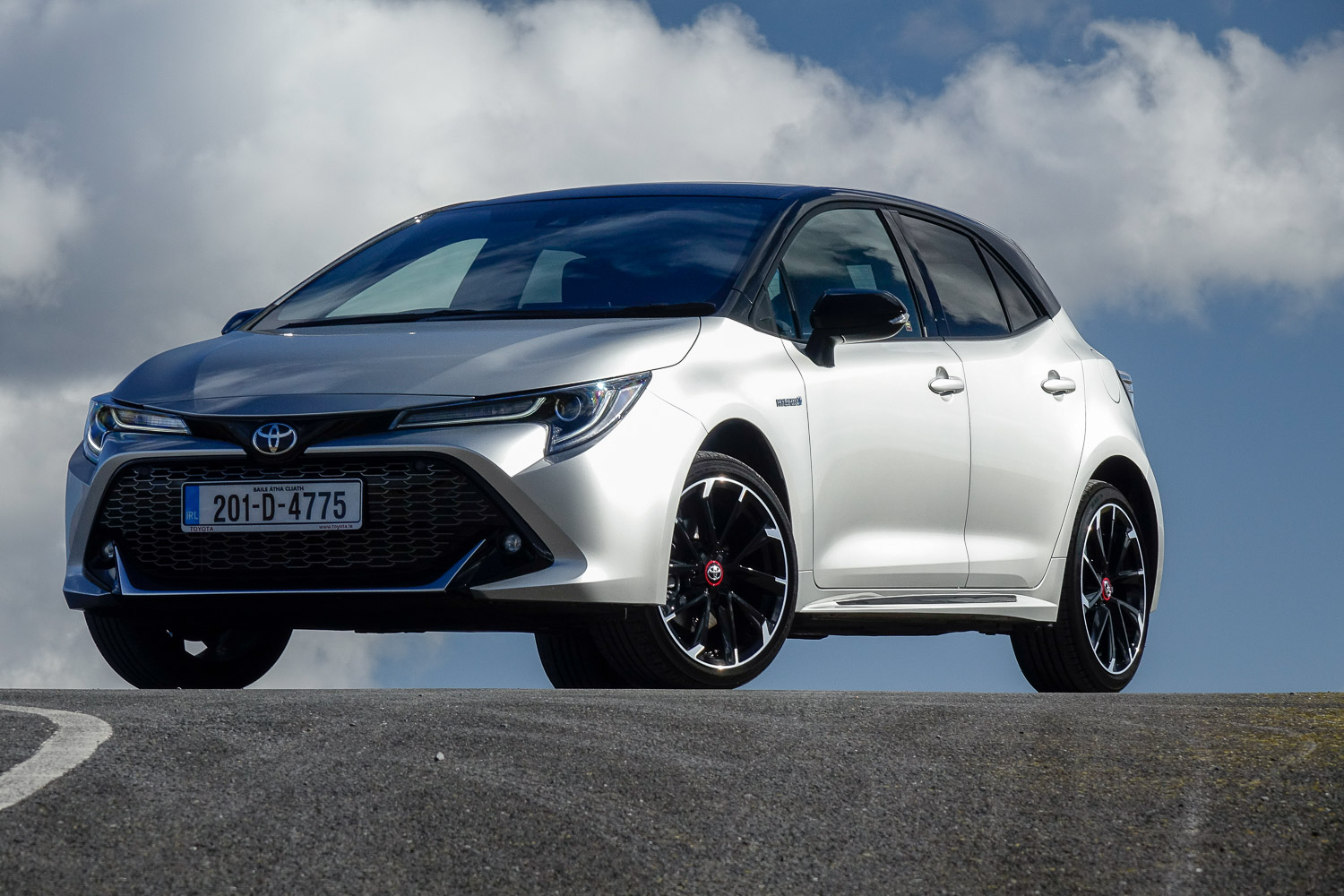Honda needs a big, mainstream hit to put it firmly back on Irish buyers' shopping lists. Is the new, hybrid-only, Civic the car to do it? And can it take on the mighty Toyota Corolla?
In the metal
Honda has spent years producing ever-more outrageous designs for the Civic (remember the mid-2000s 'spaceship' look?), which means that the new model's sober, restrained look is almost shocking in itself. It takes some of the pared-back styling of the HR-V crossover, but if anything it's even more restrained than that car. The Civic is handsome, unquestionably, but it might also be a bit forgettable.
All will be forgiven once you sit inside. The previous Civic had something of a disappointing cabin, which looked messy and felt a bit cheap in places. The new Civic utterly reverses that - the cabin is super-clean and simple in its styling, and the quality levels have definitely taken a big step up.
In the instrument panel, there's a 10.2-inch digital display (a seven-inch screen appears in basic models) that has two neat, circular dials. They look quite classy, and you can easily enough customise the information that appears within them, using the buttons on the three-spoke, multi-function steering wheel.
In the centre of the dash, there's a nine-inch touchscreen, which gets a menu layout and graphic design that represents a massive improvement compared to that of the old Civic. Helpfully, it keeps a physical volume control and a couple of shortcut buttons, and it features Apple CarPlay and Android Auto connectivity.
Below that there are physical controls for the air conditioning system, which feel like high-quality items. We also need to take a moment to note the air vents - not something we'd normally do, but Honda uses a neat stylistic trick to make it appear as if the dash vents are one big vent that stretches the full width of the cabin. They're also bigger vents than normal, and have a wider range of adjustment. Best of all, to change the direction of the airflow, you use sweet little joystick-like controls, which give off a pleasing, and expensive-sounding, click when they return to centre.
Down low on the centre console, in our Advance-spec test car, there was a wireless phone charger along with two USB ports and a 12-volt socket.
Drive selection is taken care of by a neat push-button control (there's no manual gearbox option now that the Civic has gone fully hybrid) and there are two cupholders next to that.
The front seats are excellent - almost armchair-squishy, but supportive on a longer run - and the driving position, at least in this left-hand-drive model, spot on.
In the back, space has actually improved slightly compared to the previous Civic, thanks to a longer wheelbase. Although the roof height is a little lower than before, there's no lack of headroom, and plenty of legroom. Really, as before, the Civic has rear seat space closer to that of a bigger saloon model, such as a VW Passat or Mazda6.
The boot is good too, although at 416 litres, it's not as far ahead of the competition as it once was. The new Civic retains the older model's sideways-retracting luggage blind, which makes folding the back seats so much easier, but there is a noticeable step as the boot approaches the back seat, which will make loading longer, larger items a touch tricky.
Driving it
Honda says that the new Civic is 'the Drivers' Hybrid' and wants it to be seen as the sporting choice in the family hatch segment. At first, when you drive it, that seems a bit puzzling...
On the good side, the e:HEV hybrid system is much improved over the version Honda launched in the HR-V. Extra care has been taken with refinement, and the e-CVT gearbox (which actually has no gears at all, but a pair of electric motors instead) has been reprogrammed for a more natural-feeling 'change-up' sensation as you accelerate.
Thankfully, it all works rather well. The Civic's hybrid setup deploys 183hp and 315Nm of torque, matching the power of the previous 1.5-litre turbo VTEC petrol engine and the torque of the old 1.6 diesel. But it actually has slightly better fuel economy than the old 1.0-litre three-cylinder turbo VTEC petrol model. It's quite the combo, and it's very refined. There is a bit of the usual hybrid droning when you accelerate, but the overall refinement means that it won't trouble your ears for very long, and what noises there are, are well-subdued.
Fuel economy is excellent - over a lengthy test route that took in mountain roads, motorways, city streets and country roads we averaged 4.5 litres per 100km. That's impressive, especially given that we drove most of the route with the system in Sport mode. Drive in Normal or Eco settings, and it's noticeable how much more frequently the system slips into EV mode. Even driving one brisk country-road section, average consumption never slipped above 5.3 litres per 100km.
So the Civic is frugal and refined, but it's not especially sporty. In spite of a decent 7.8-second 0-100km/h time, performance feels closer to languid than rapid, and the Civic bobs gently on relatively soft springs, soaking up road imperfections with ease.
There is some fun to be had, though - when pushed, the steering has better weight and faster responses than you'd expect, and the Civic can feel quite enthusiastic in the right setting, but it's always limited in that respect by the softness of the suspension. Ah well, there is a more rapid and aggressive Type R coming next year, although that might not actually be sold in Ireland...
What you get for your money
The new Civic won't go on sale in Ireland until at least the end of this year, and more realistically will be a 2023 model for us. We'd expect it to come with a price tag in the region of €30-35,000, to keep it competitive with the 2.0-litre versions of the Toyota Corolla, which will be its closest rival.
While Irish specs haven't yet been set, European models come as standard with an upgraded safety suite (called Honda Sensing) that includes autonomous emergency braking, a pop-up bonnet to protect pedestrians in an impact, a traffic-jam crawling setting for the adaptive cruise control, improved lane-keeping steering and a blind-spot monitor. Other standard kit includes dual-zone air conditioning, heated front seats, the nine-inch touchscreen, privacy glass, automatic headlights and 17-inch two-tone alloy wheels.
Summary
This 11th generation of Honda's Civic hatch is very sober and grown-up, albeit with just enough fun in its bones that it's not boring to drive. It is impressively well-built, roomy and exceptionally frugal though. All we need to know now is the price.

